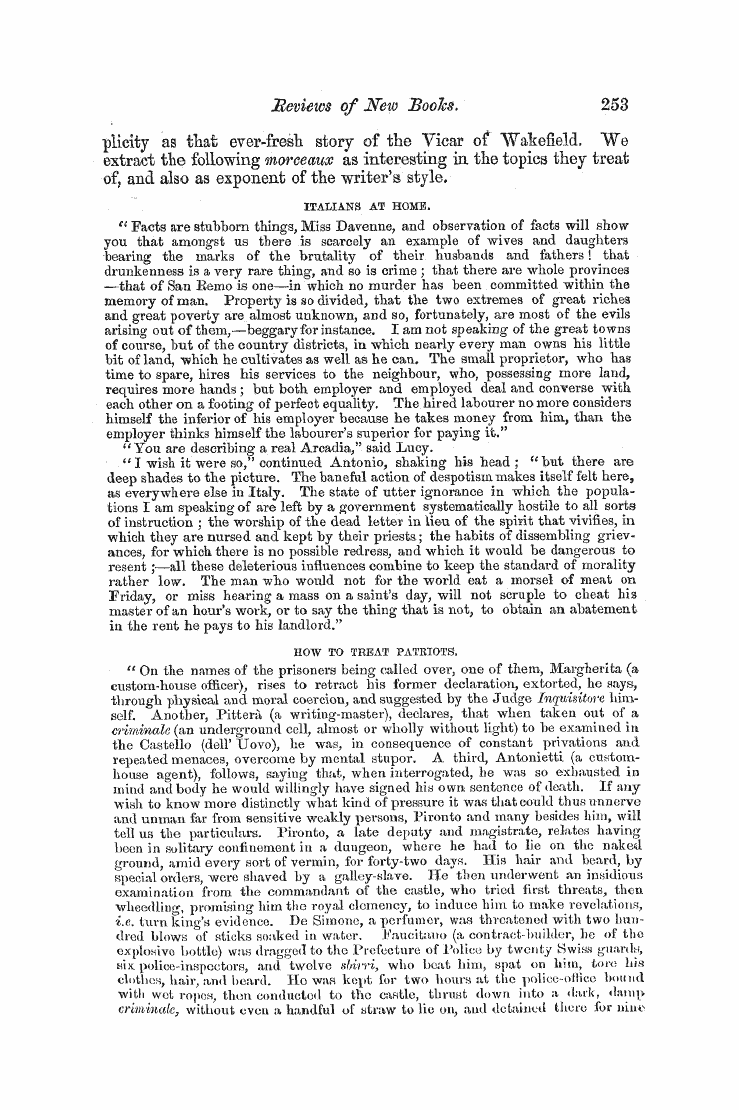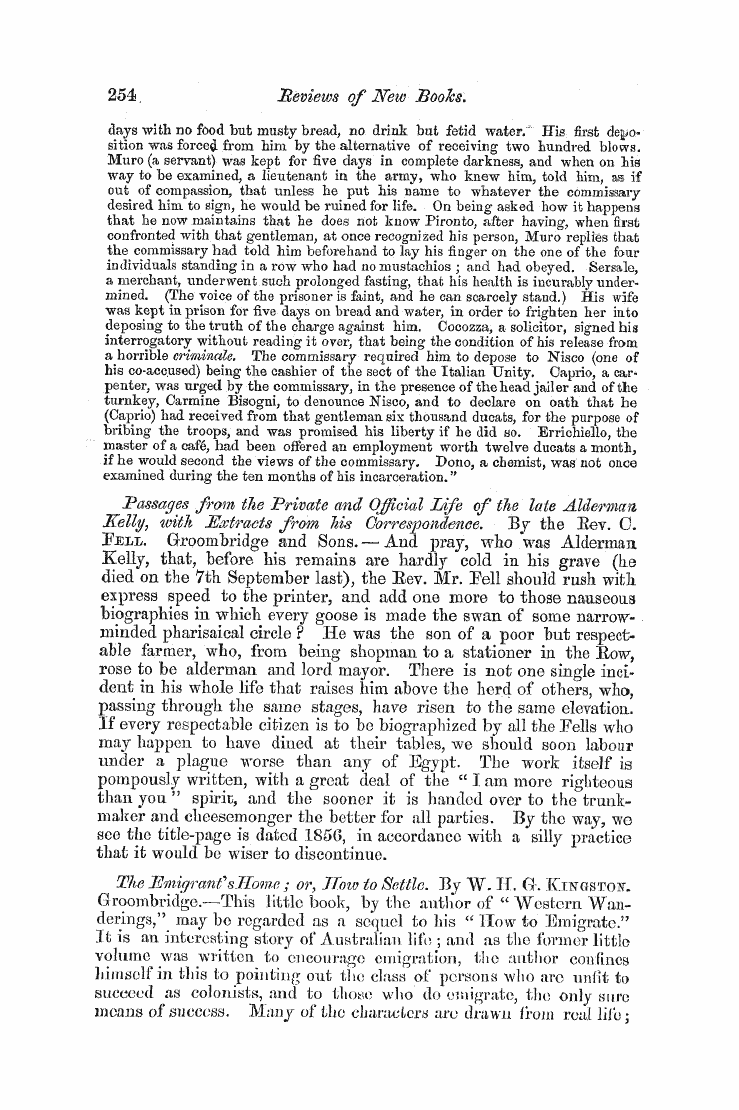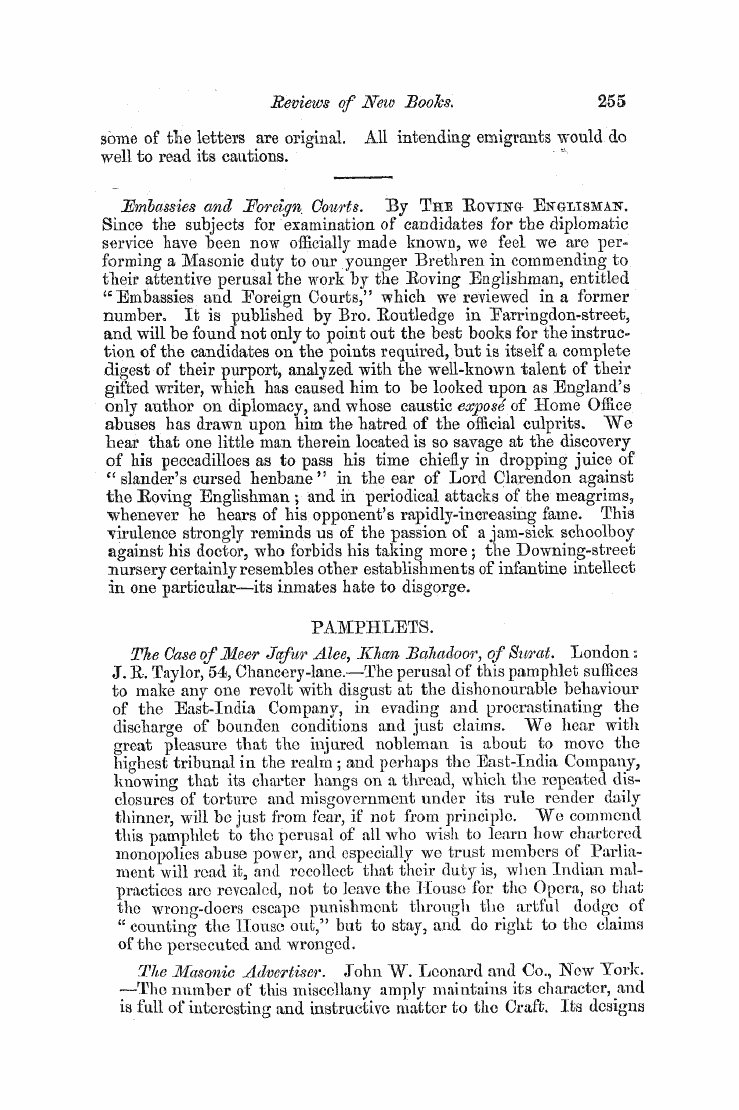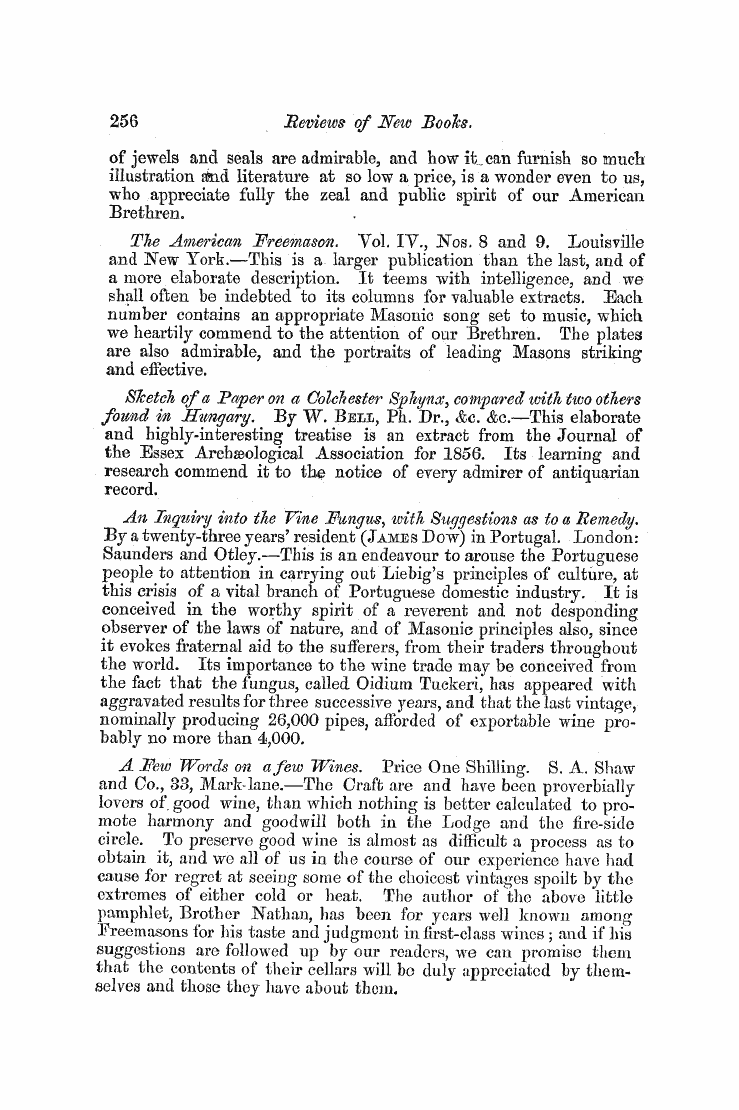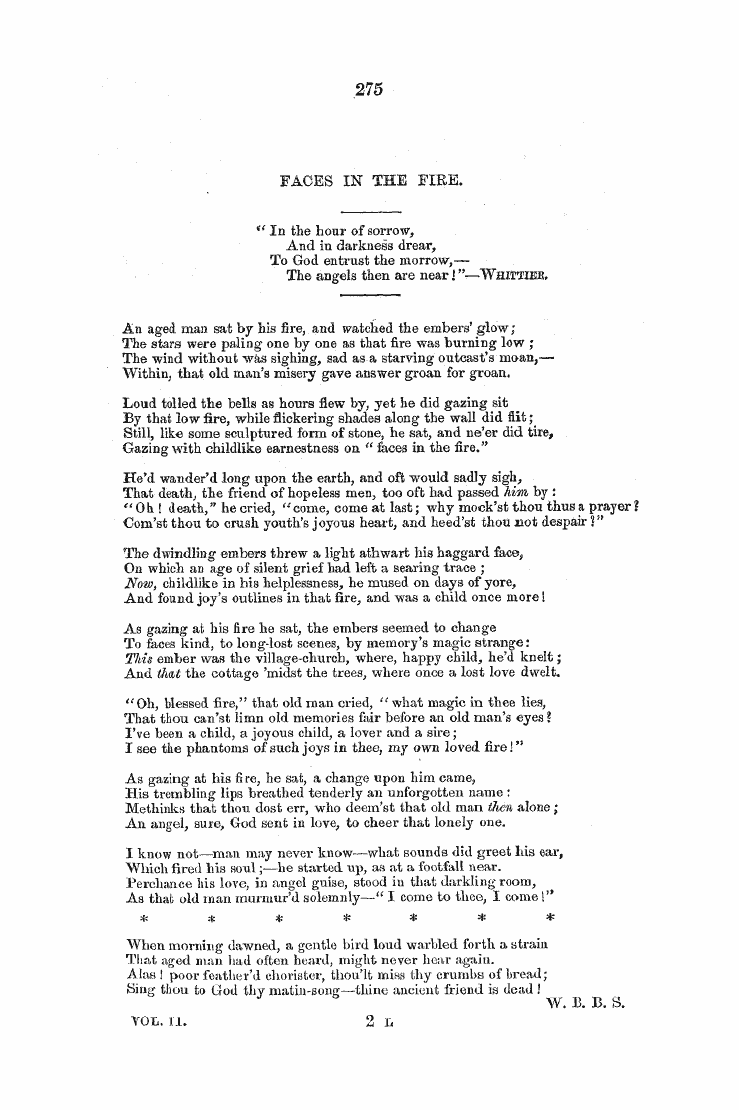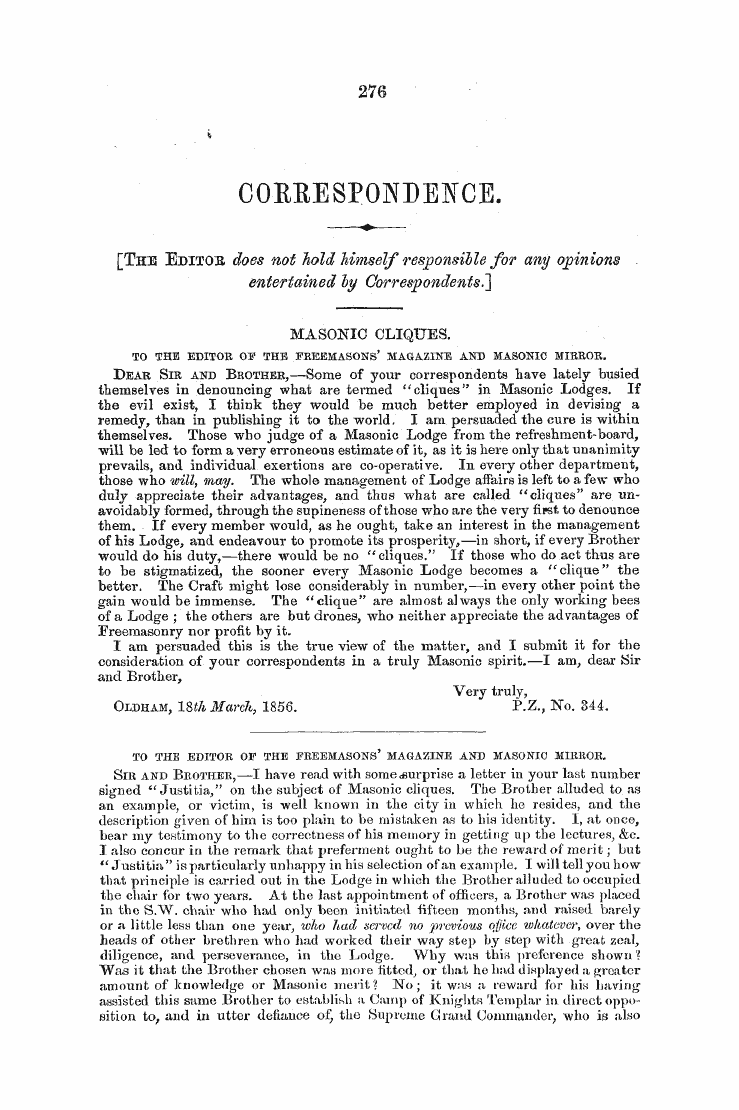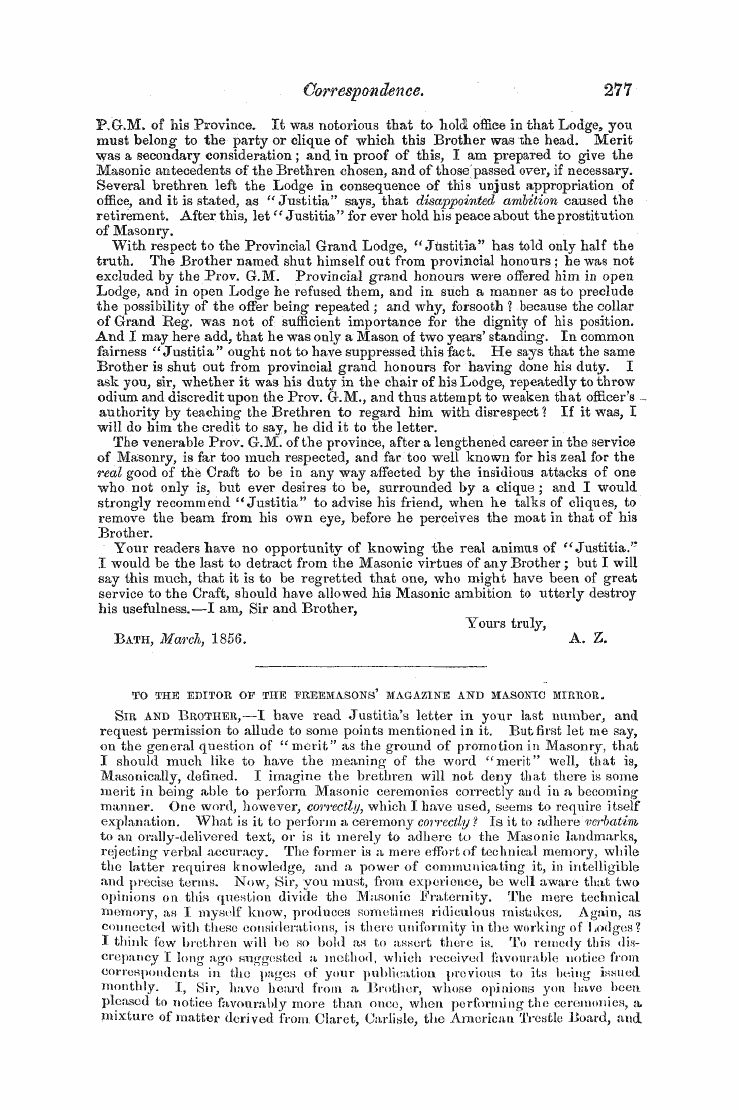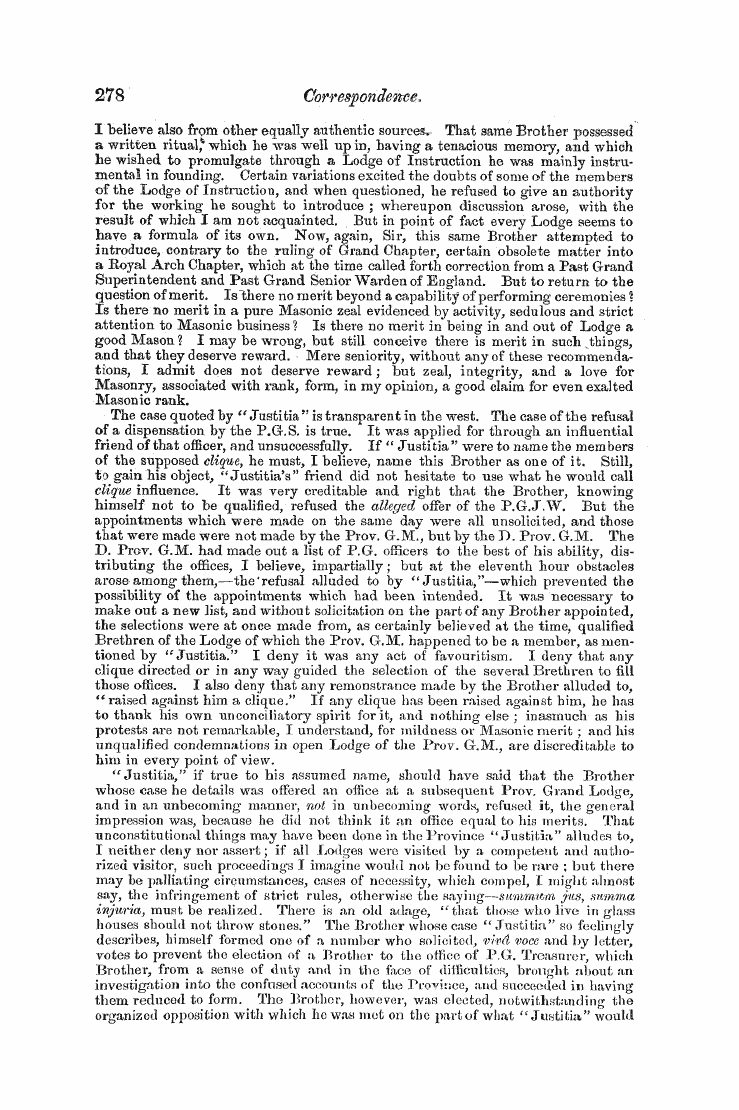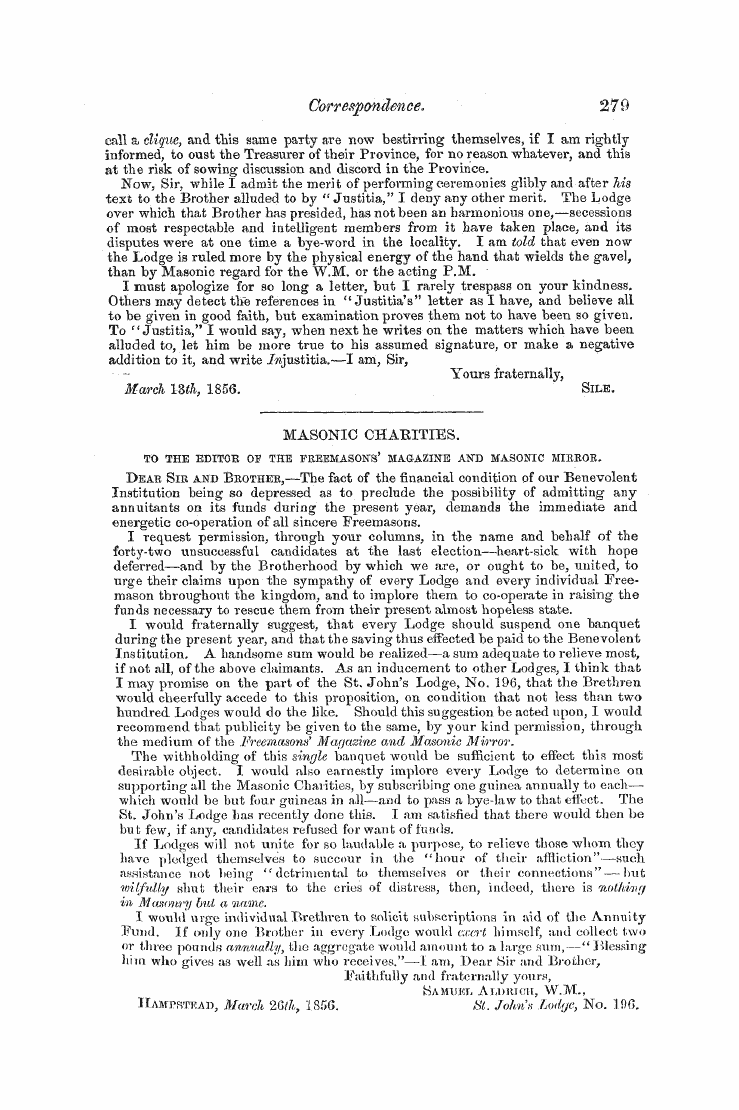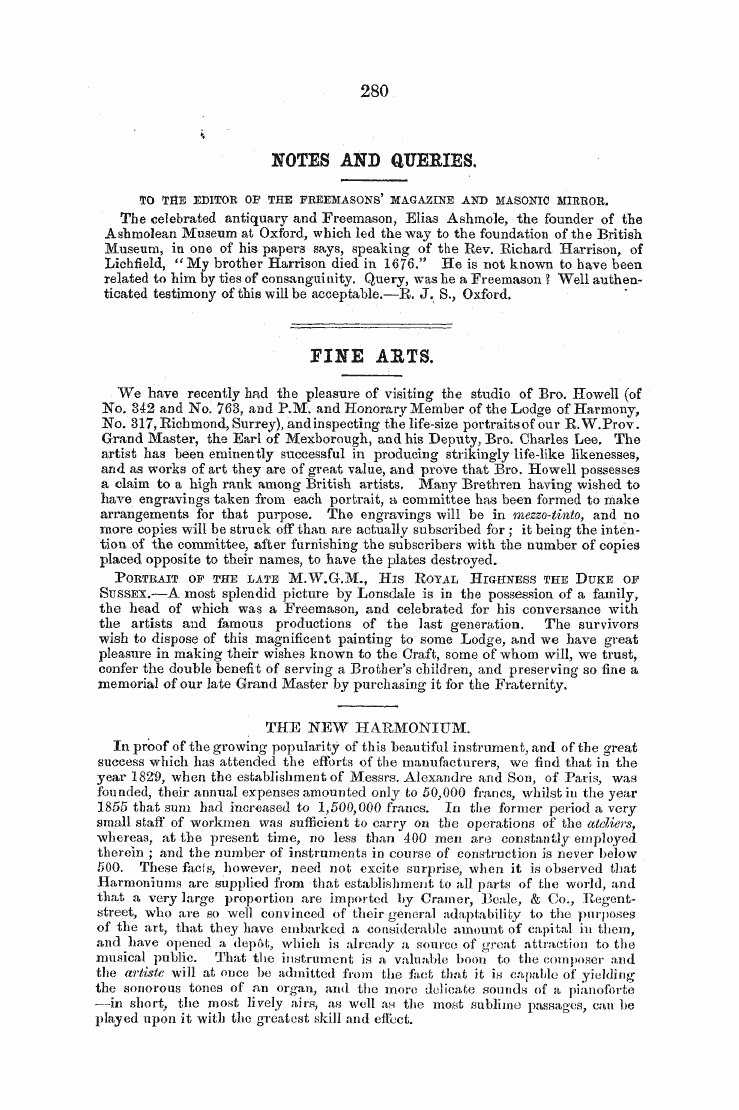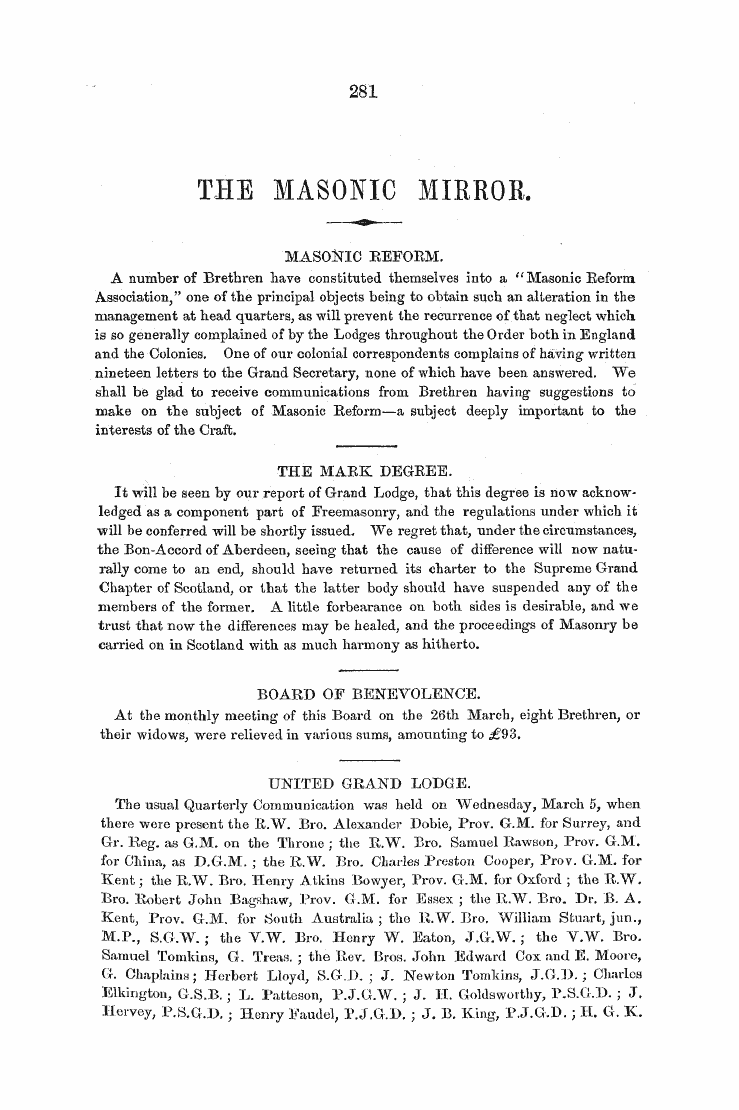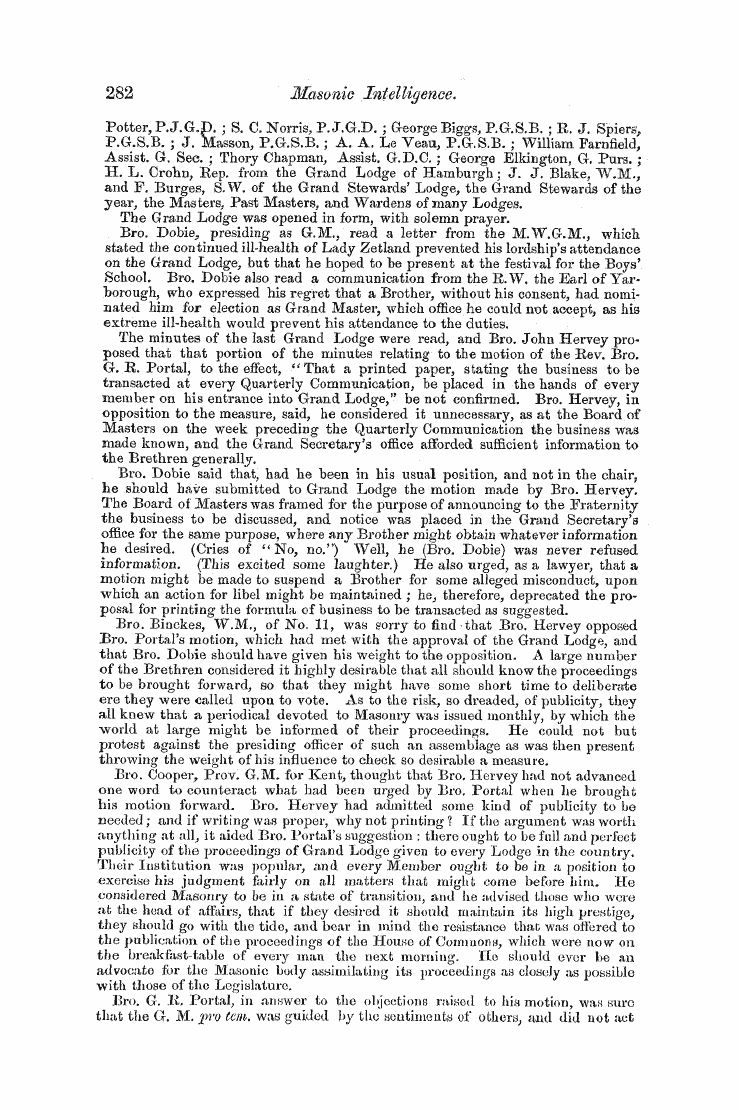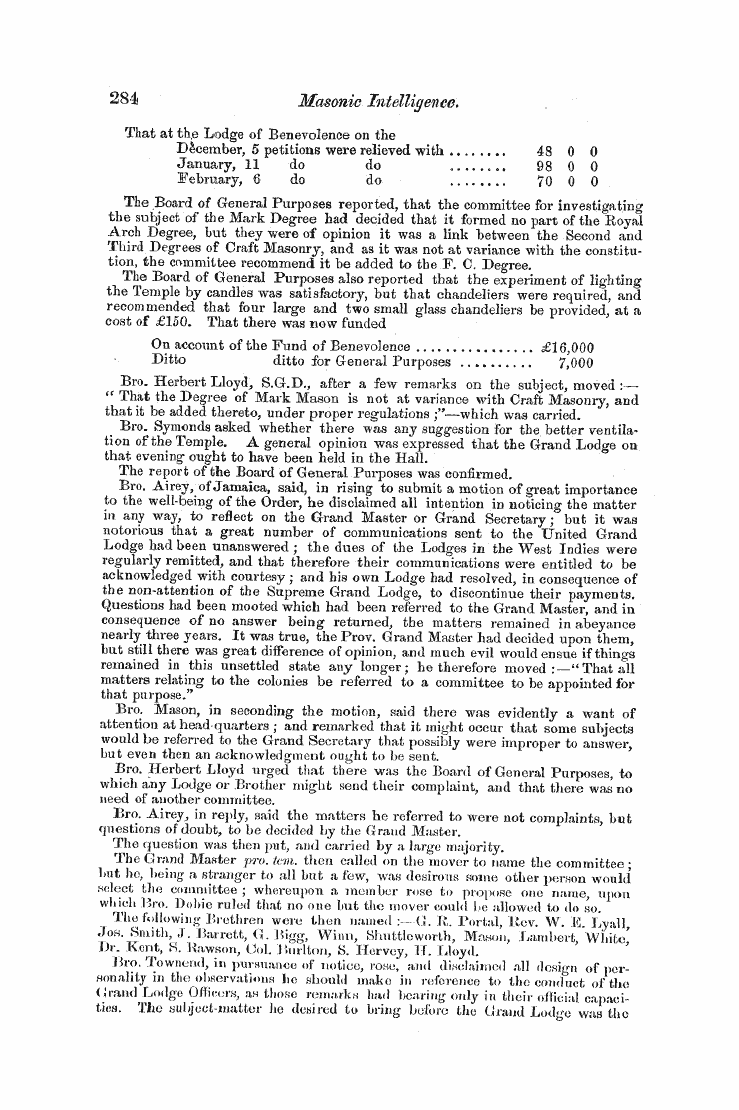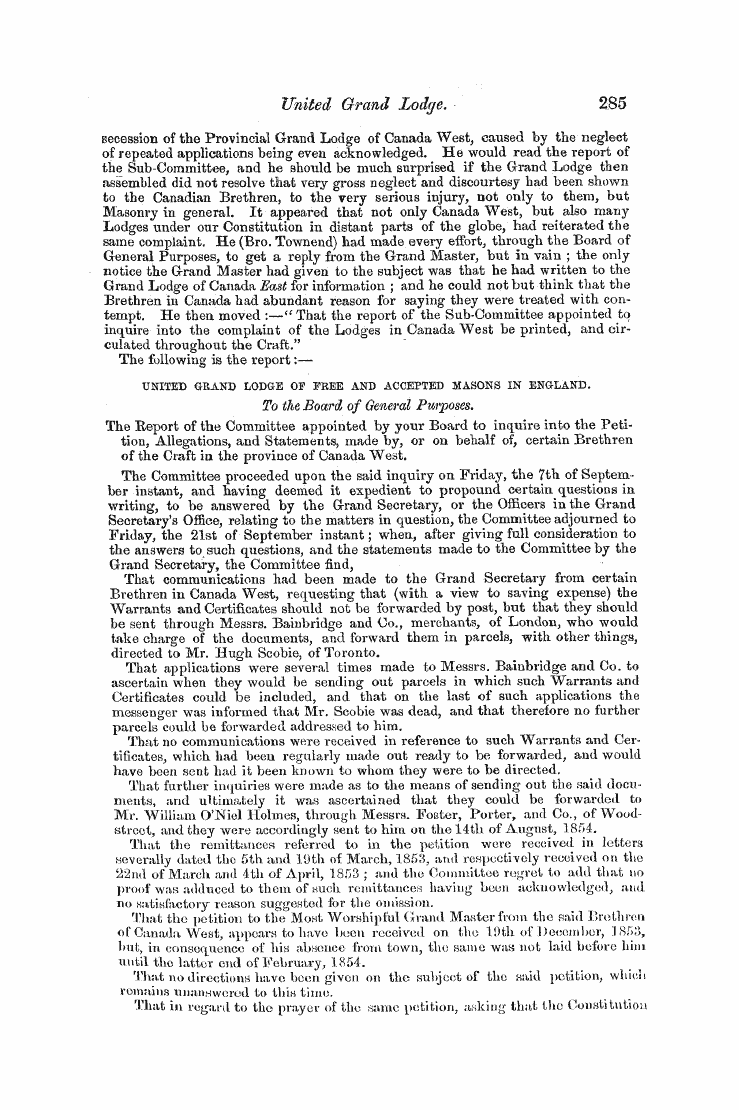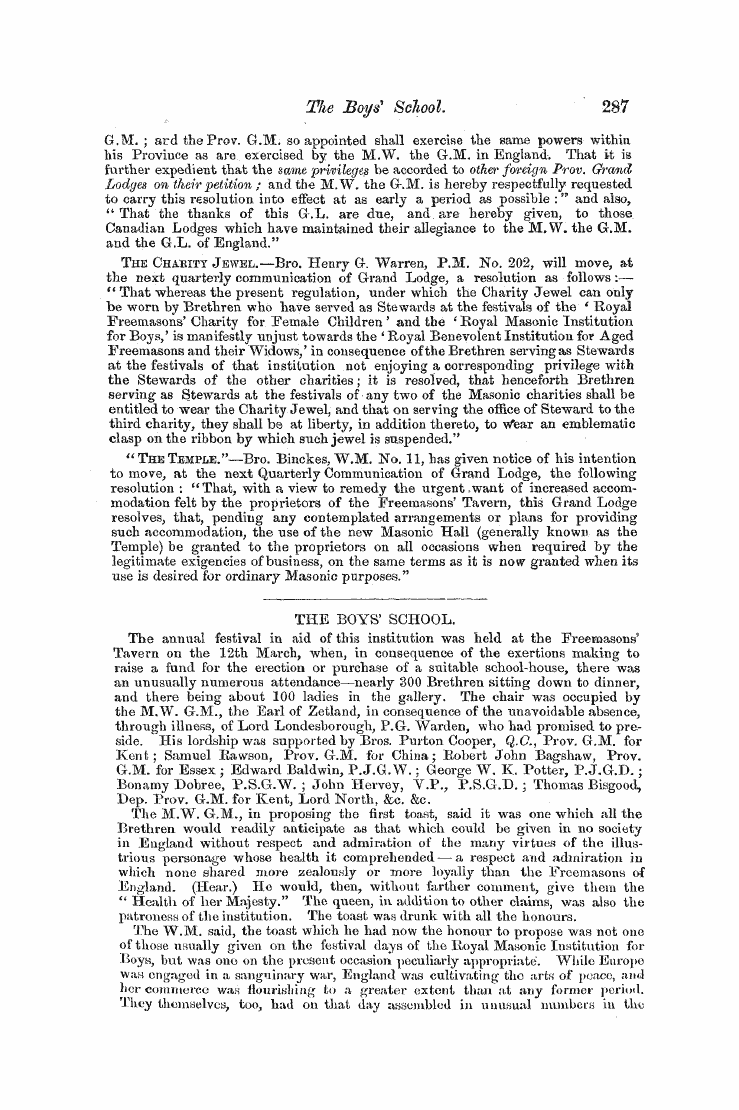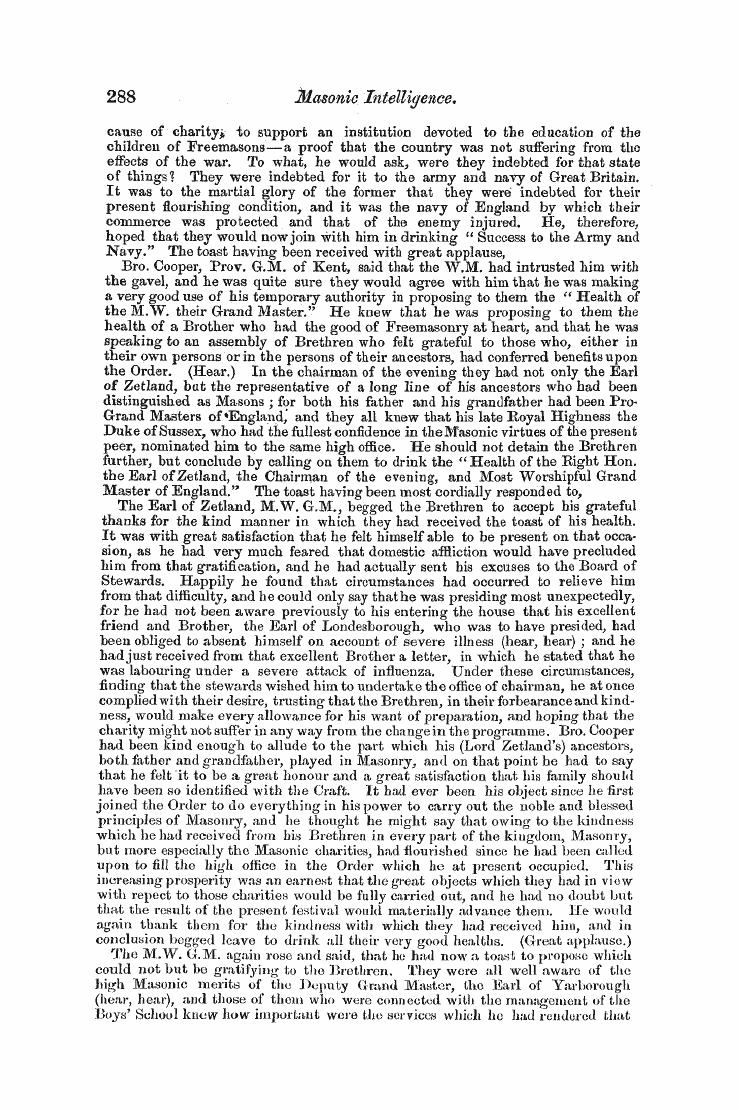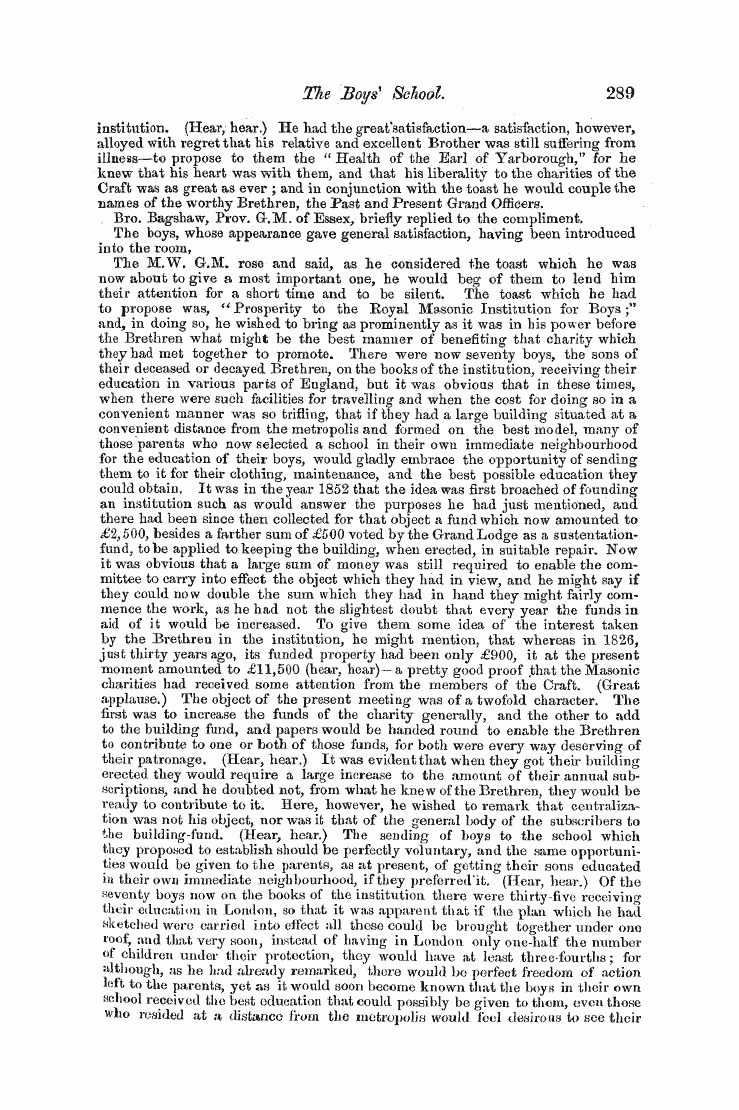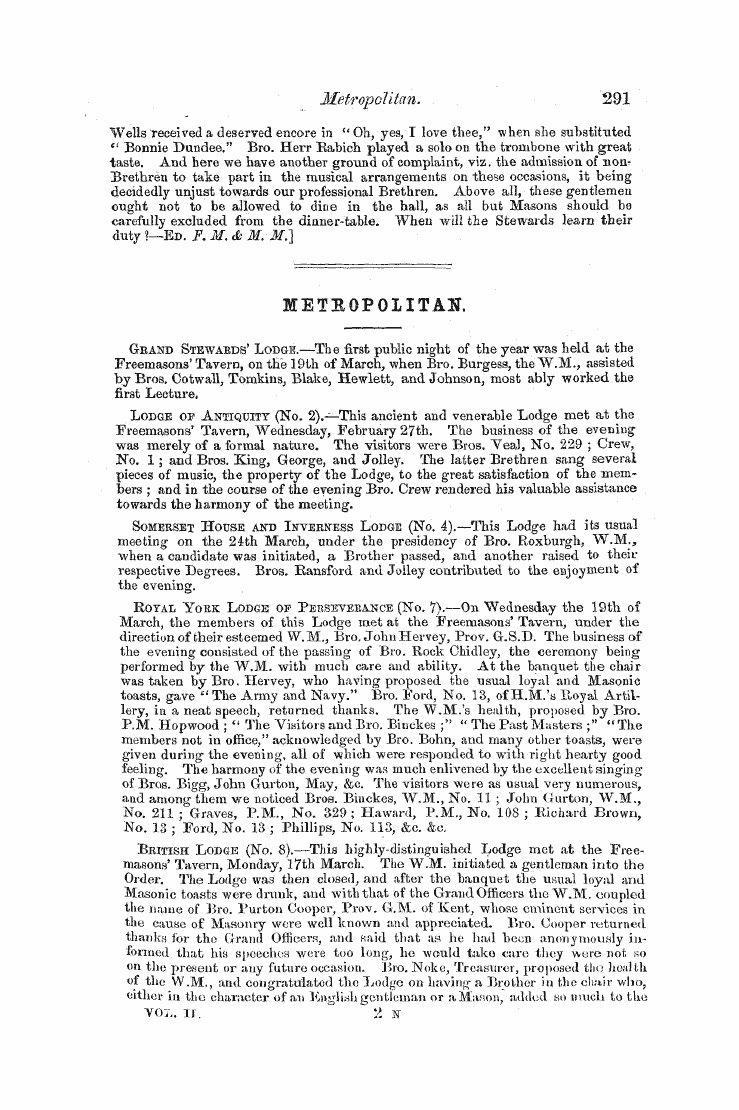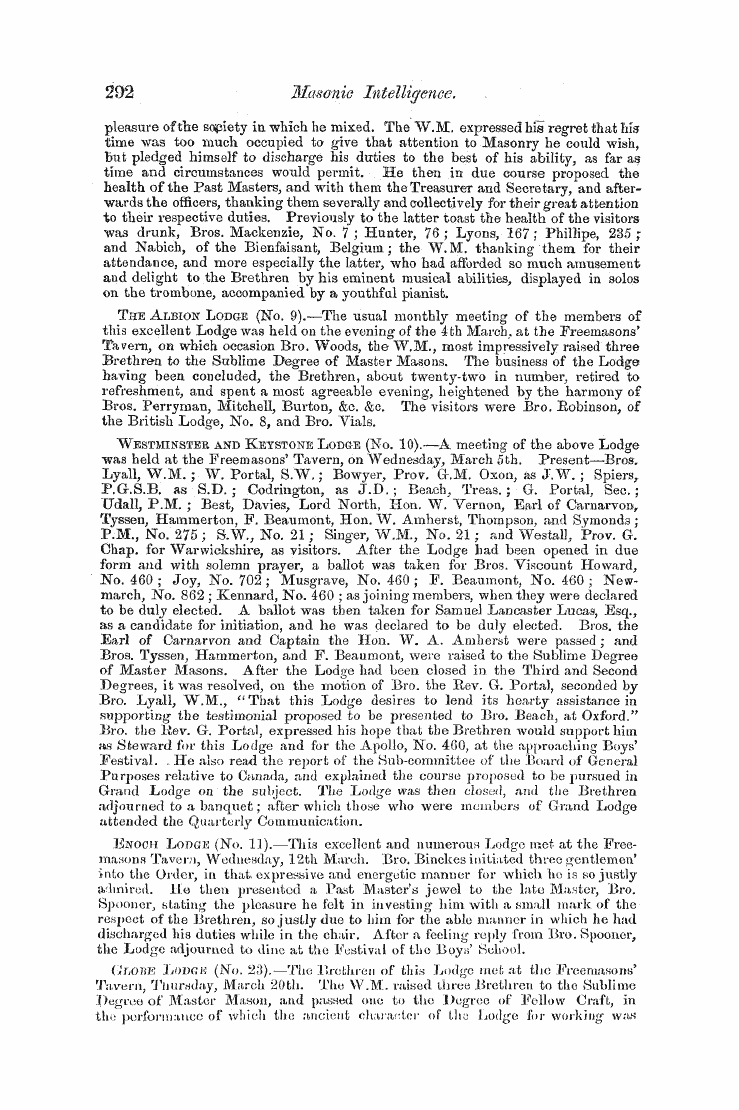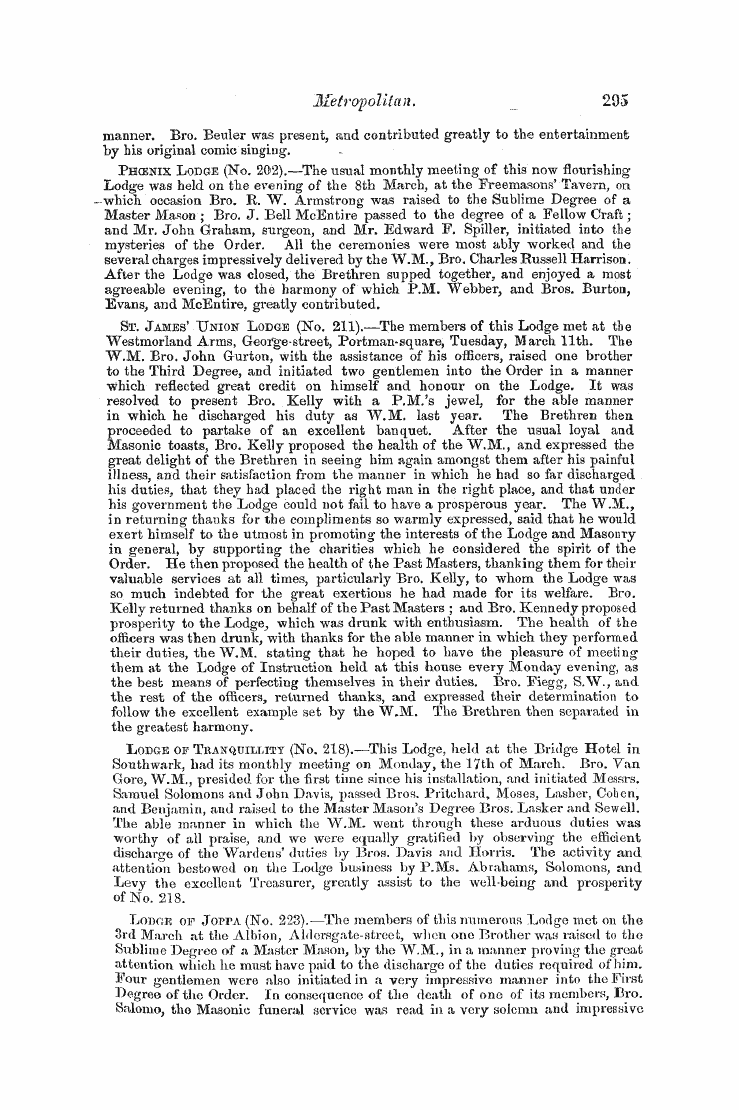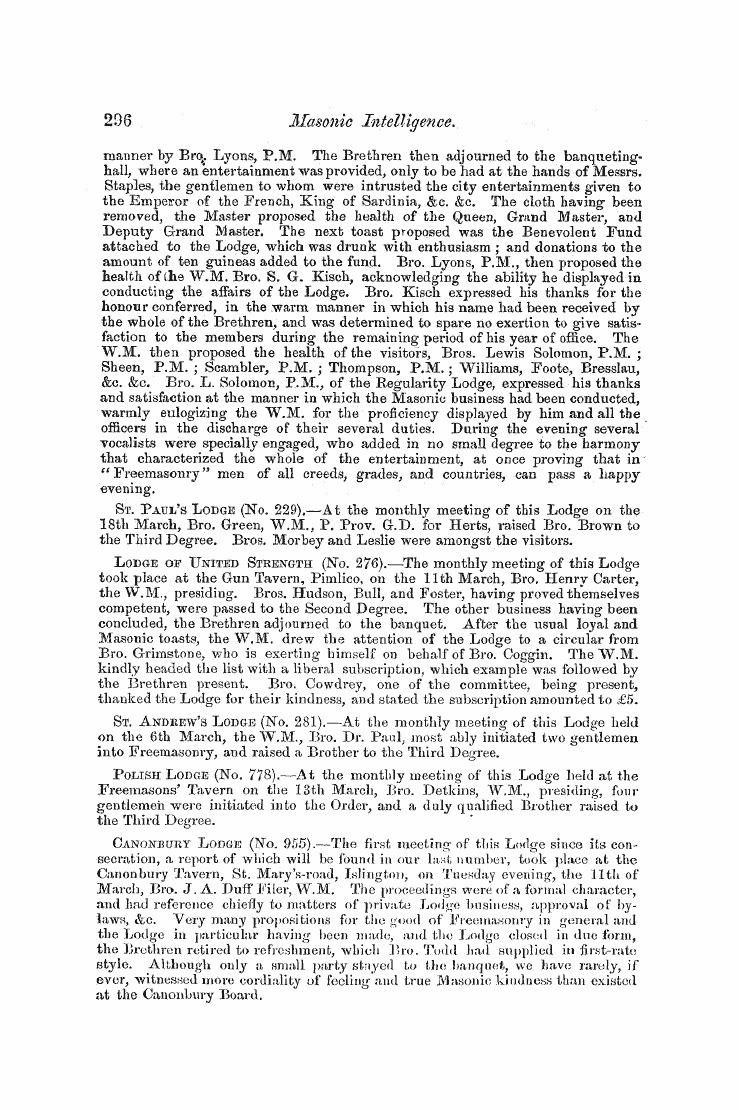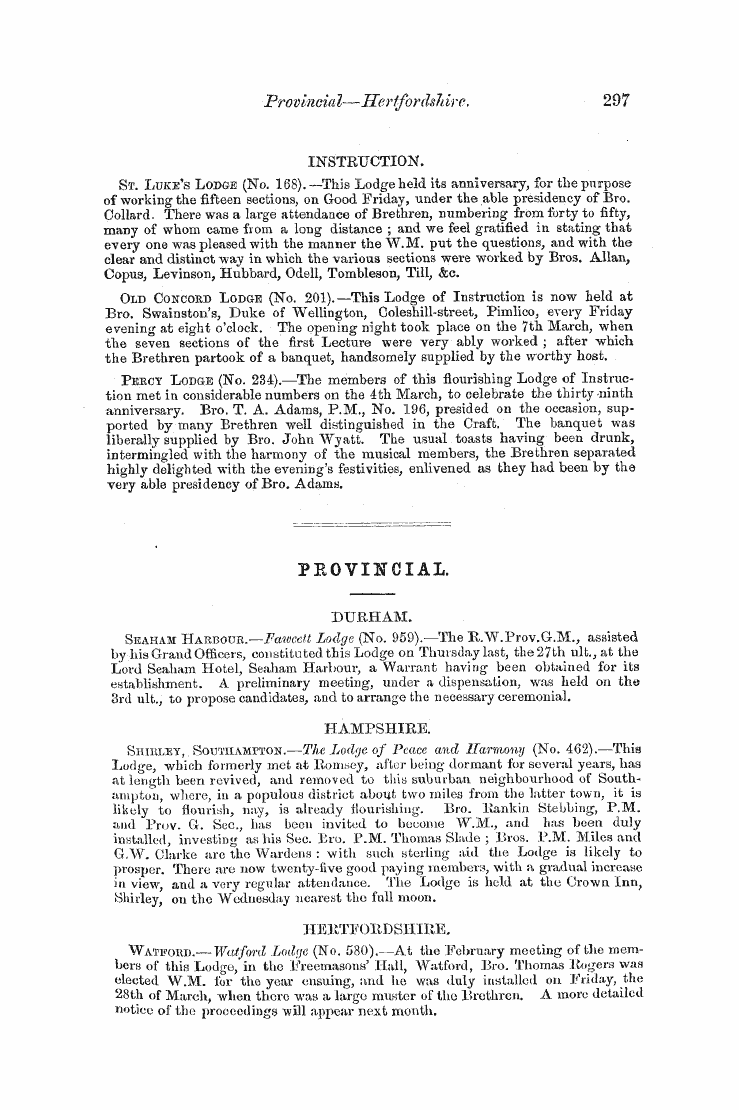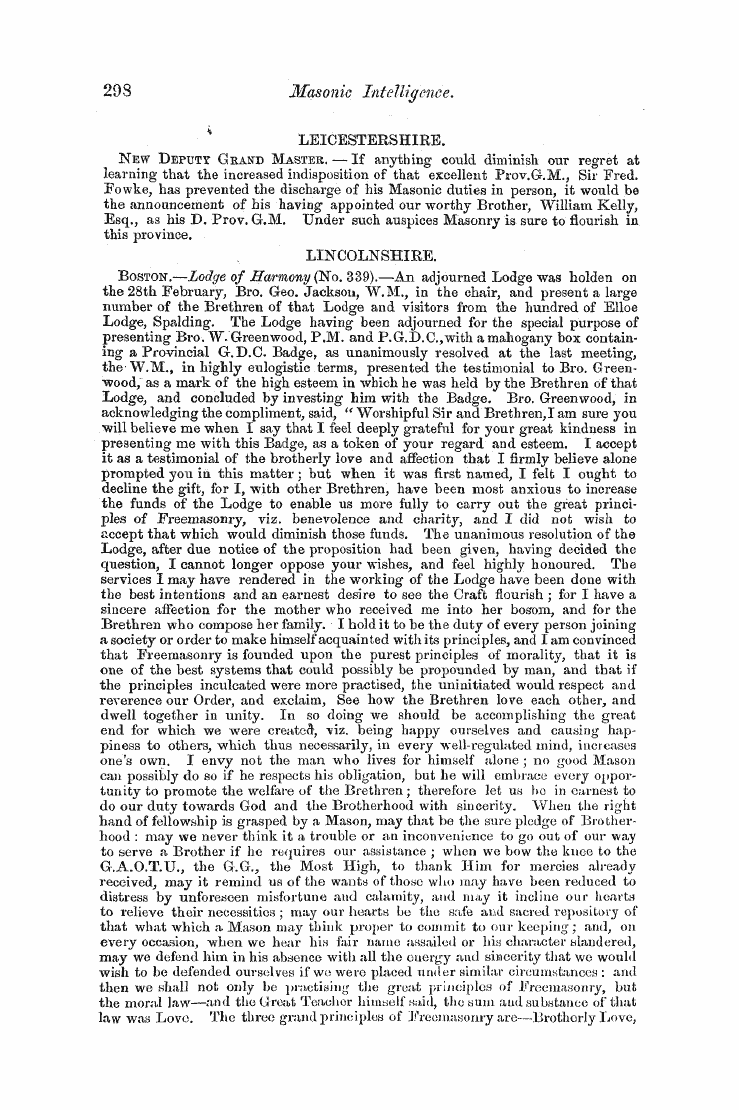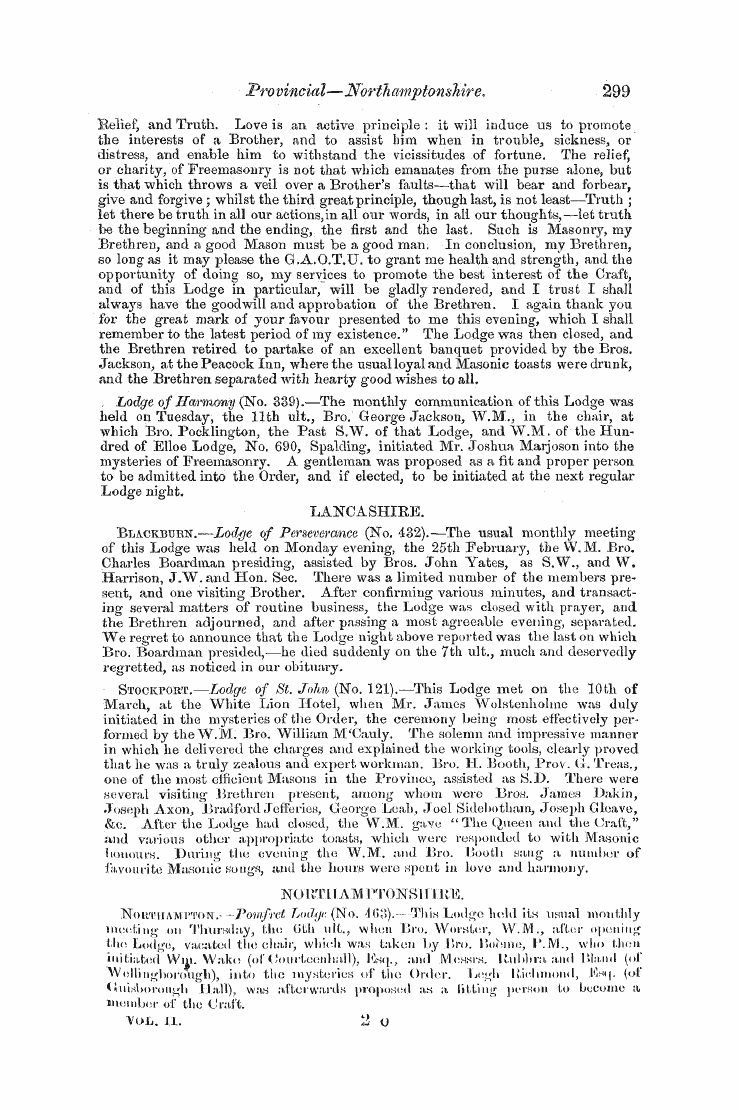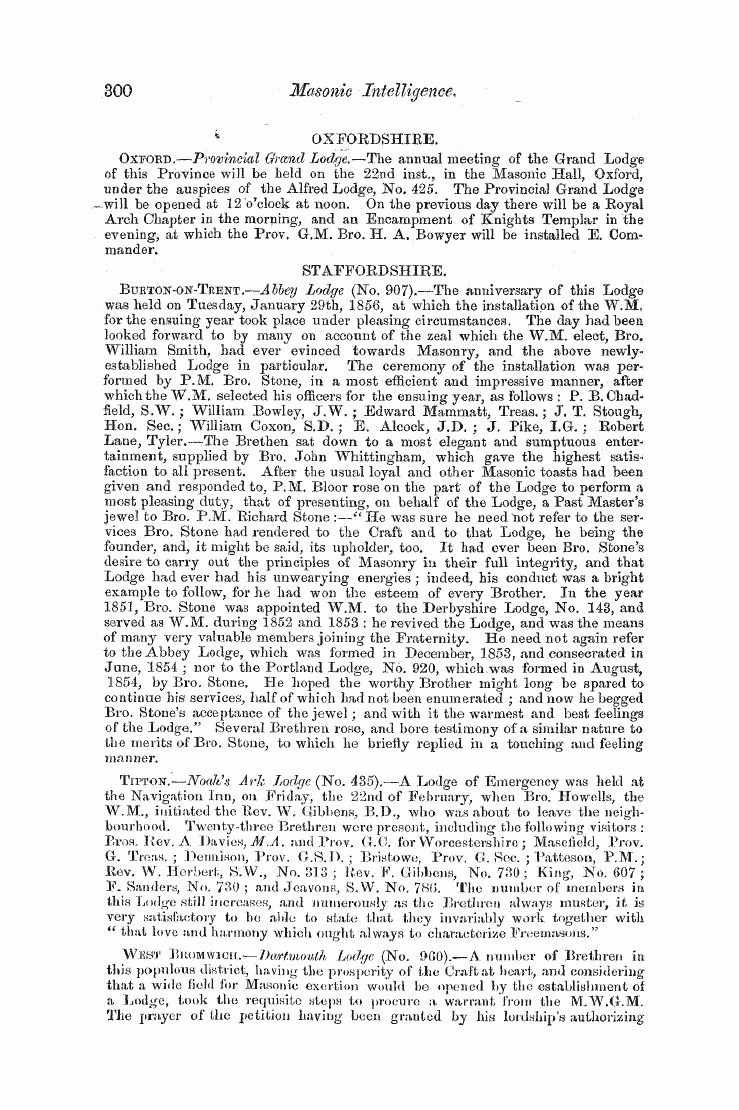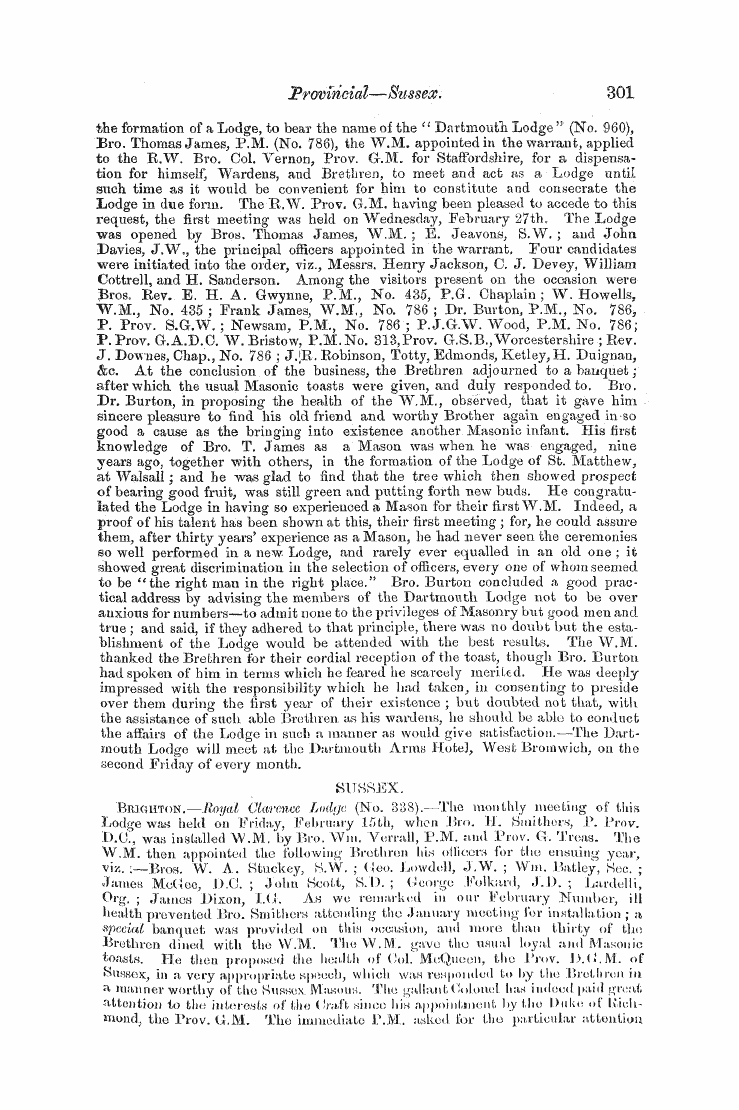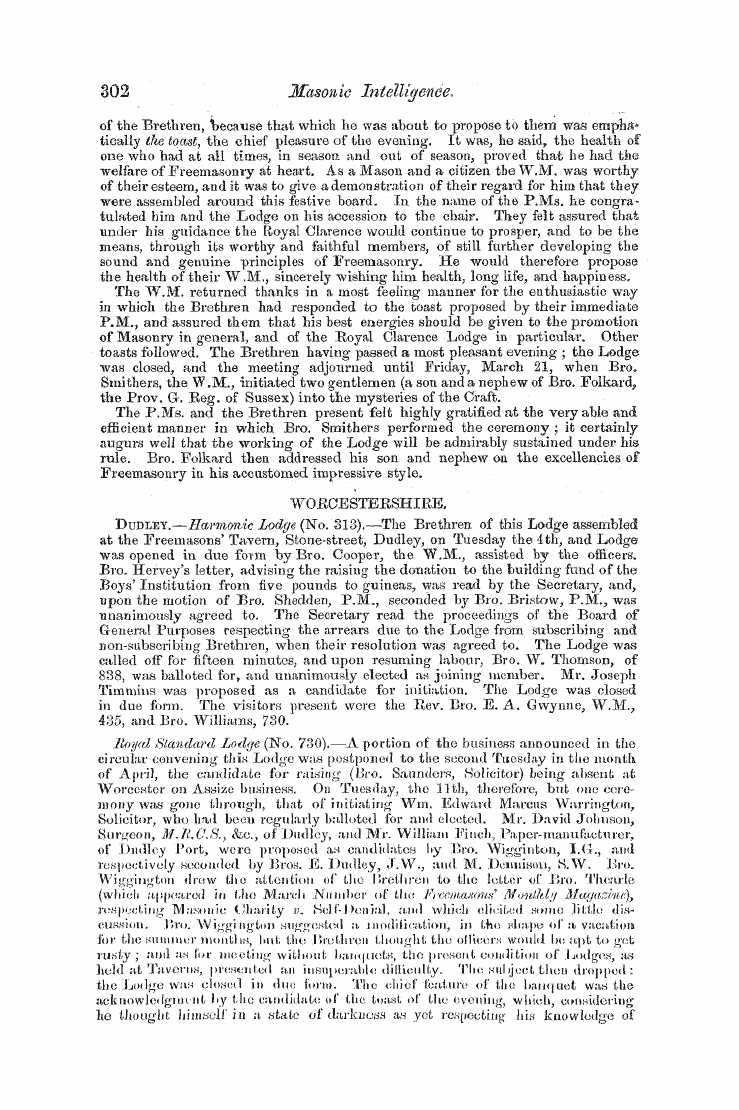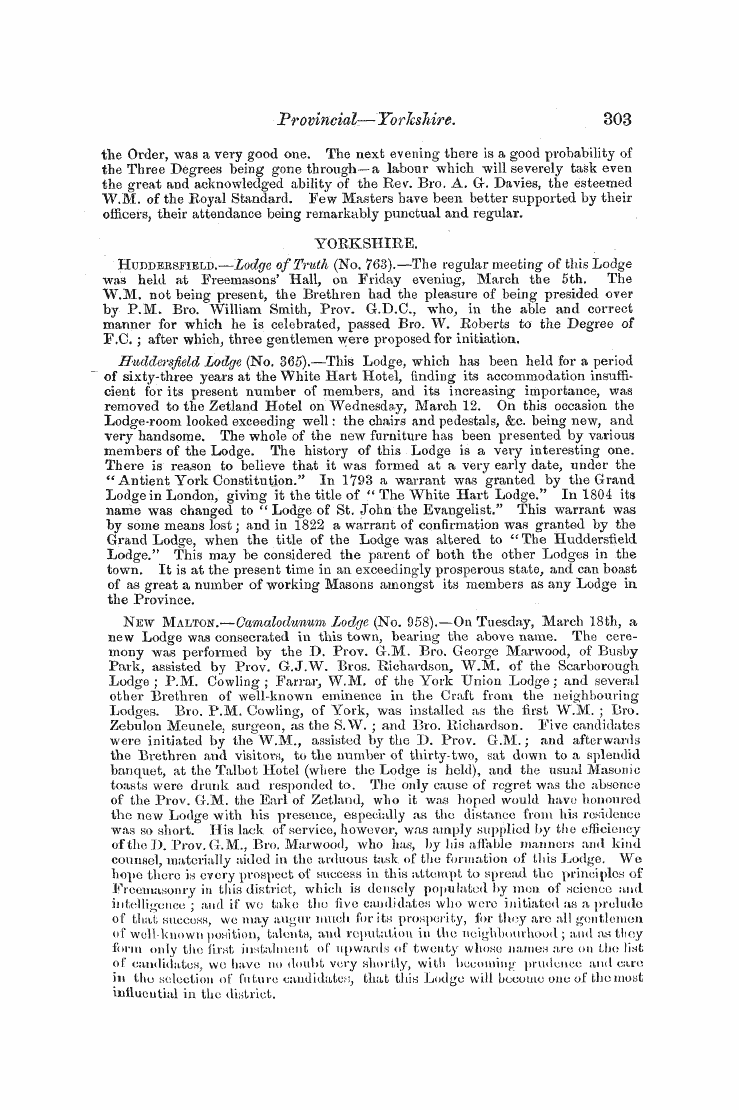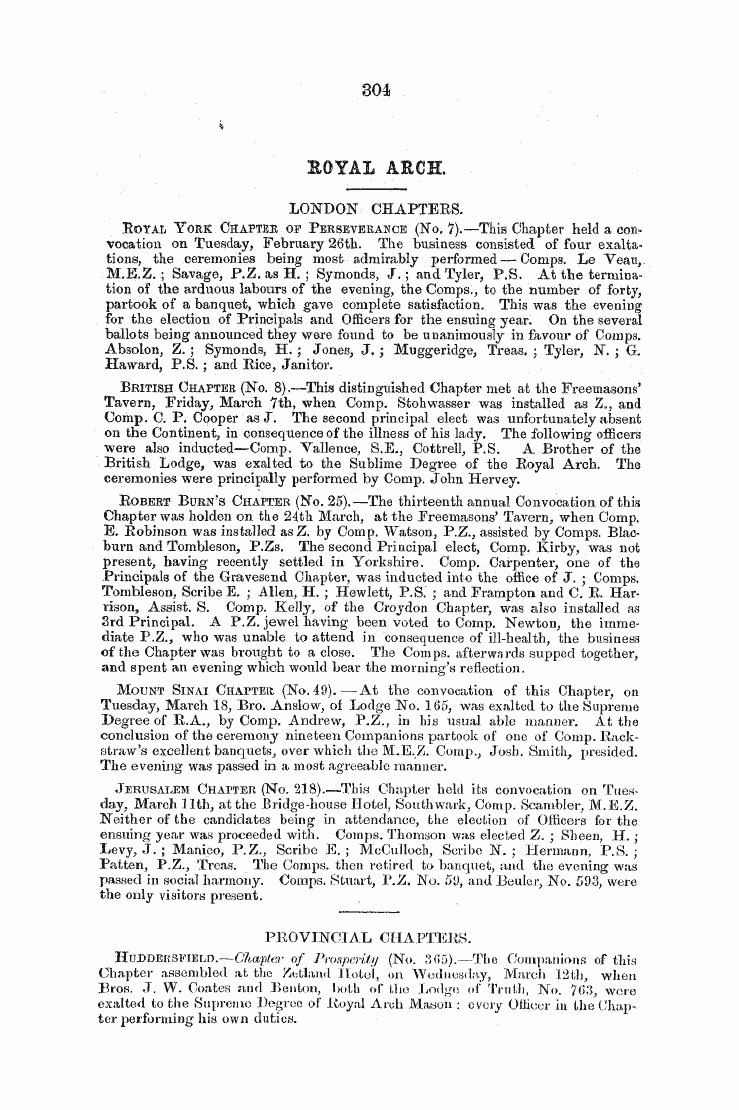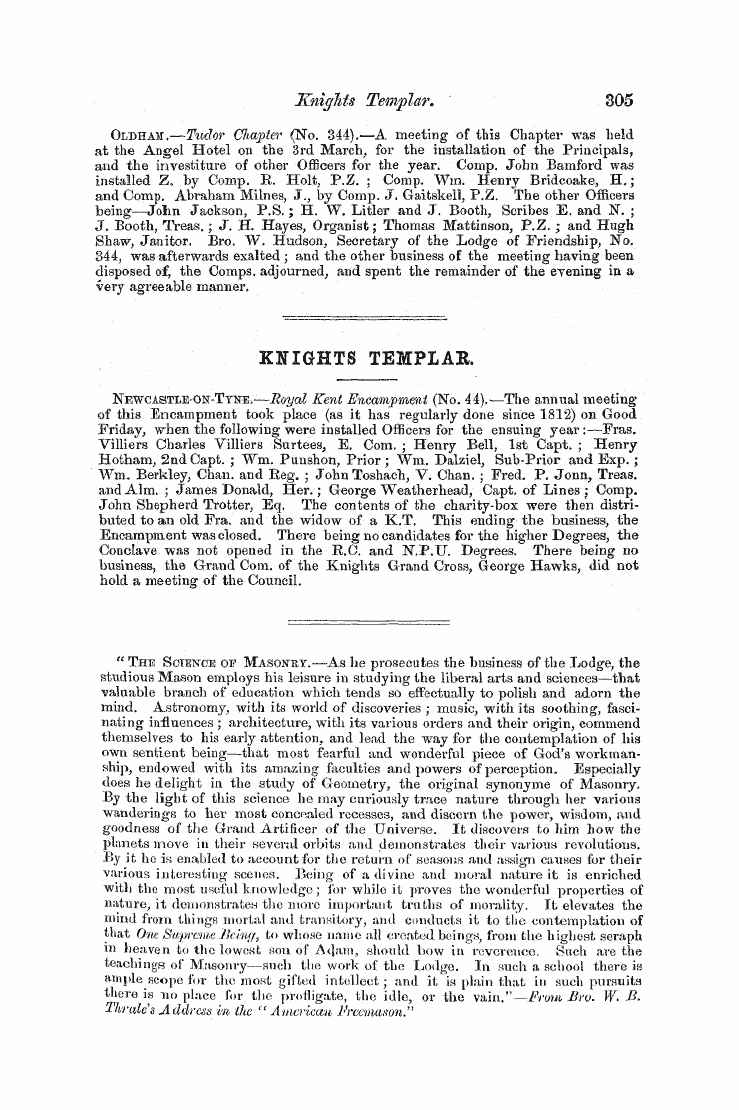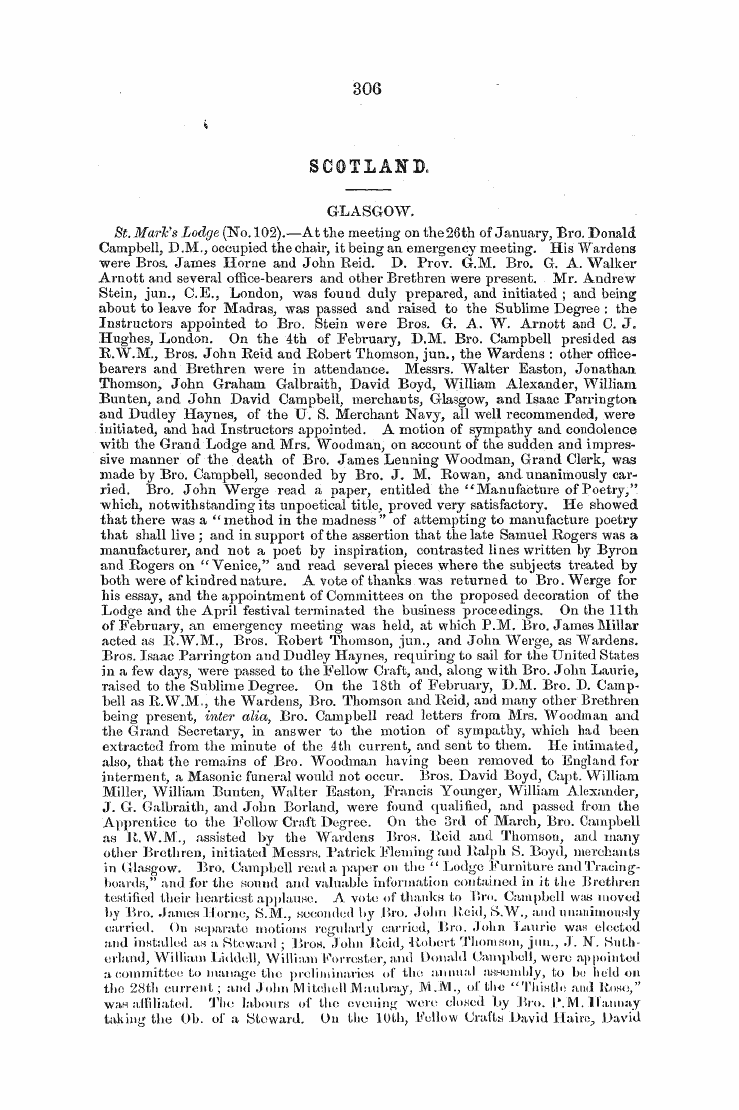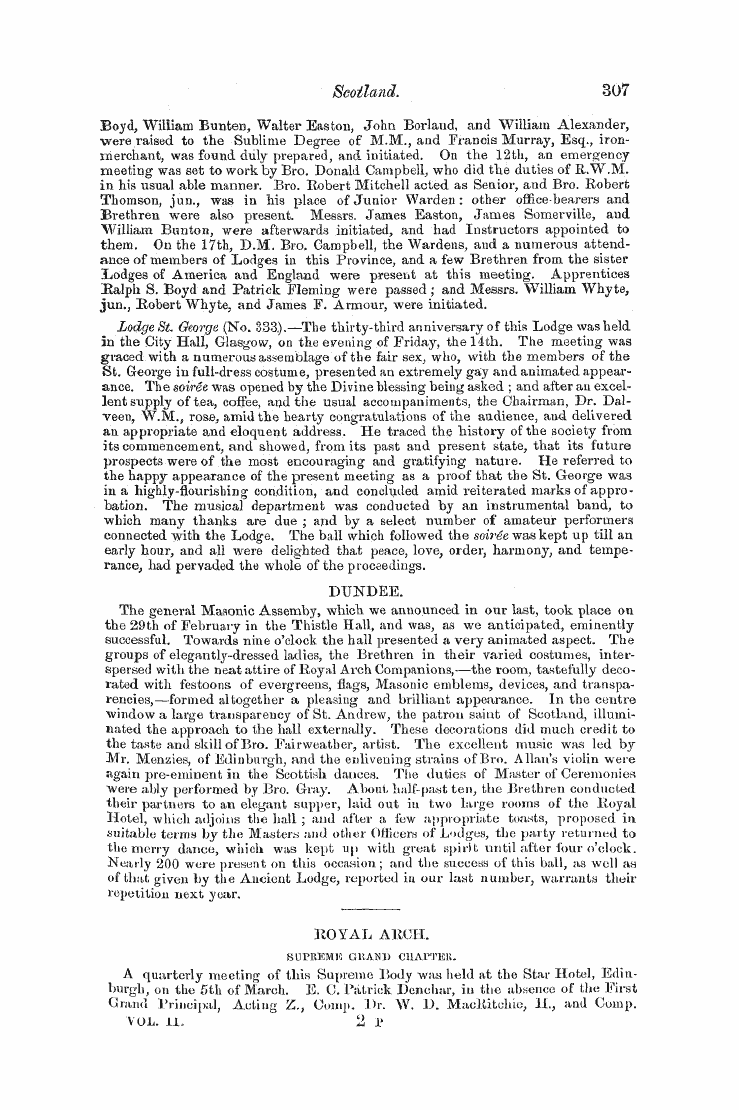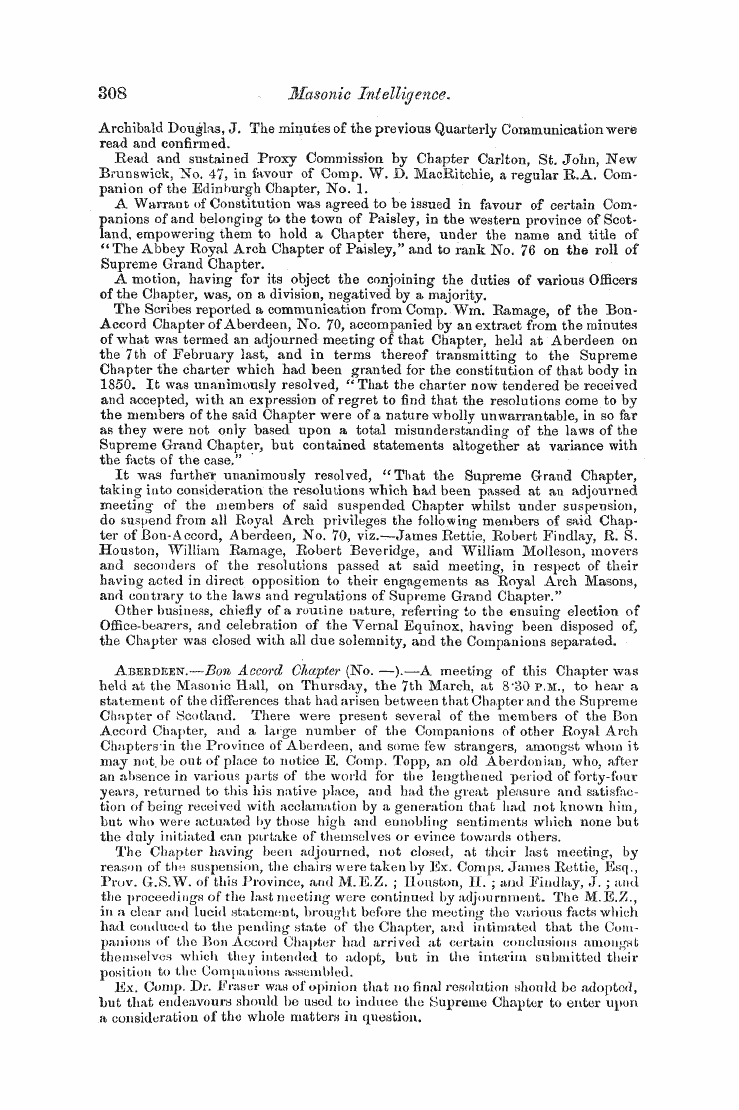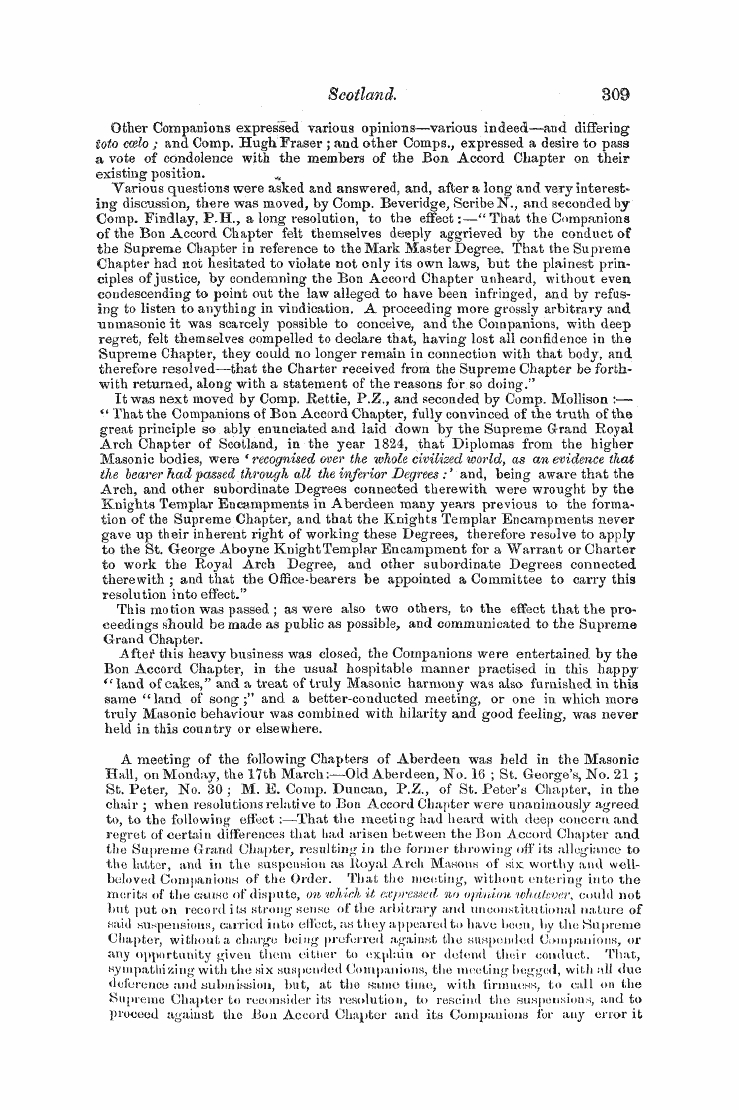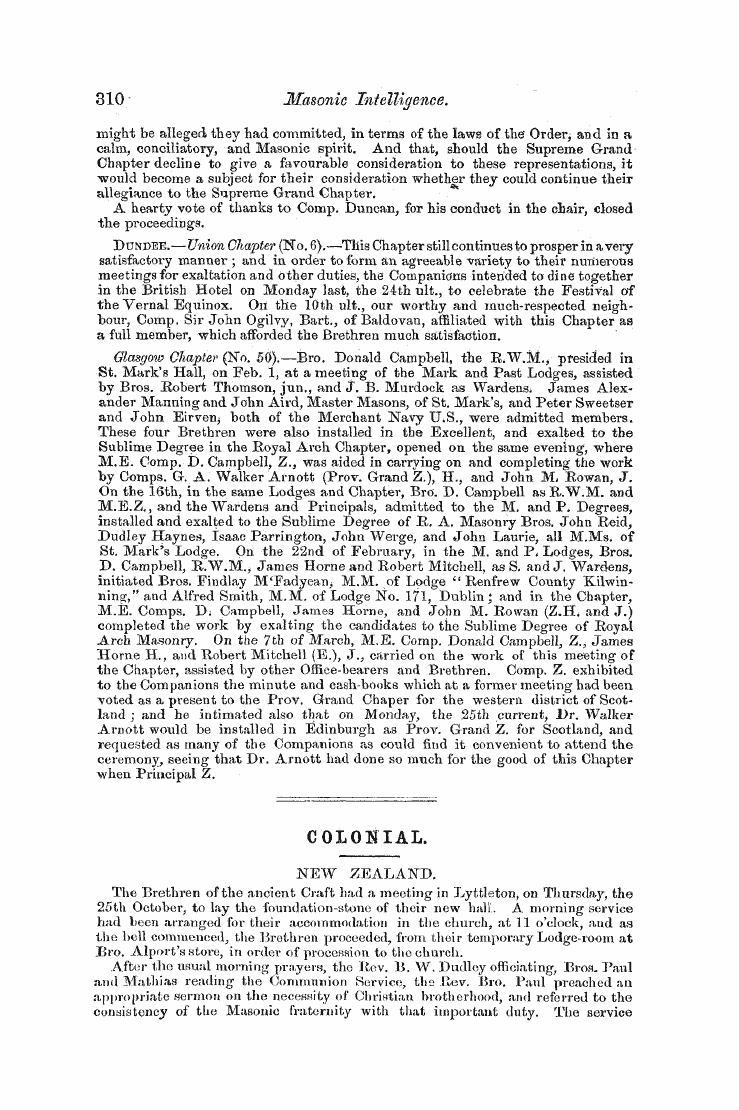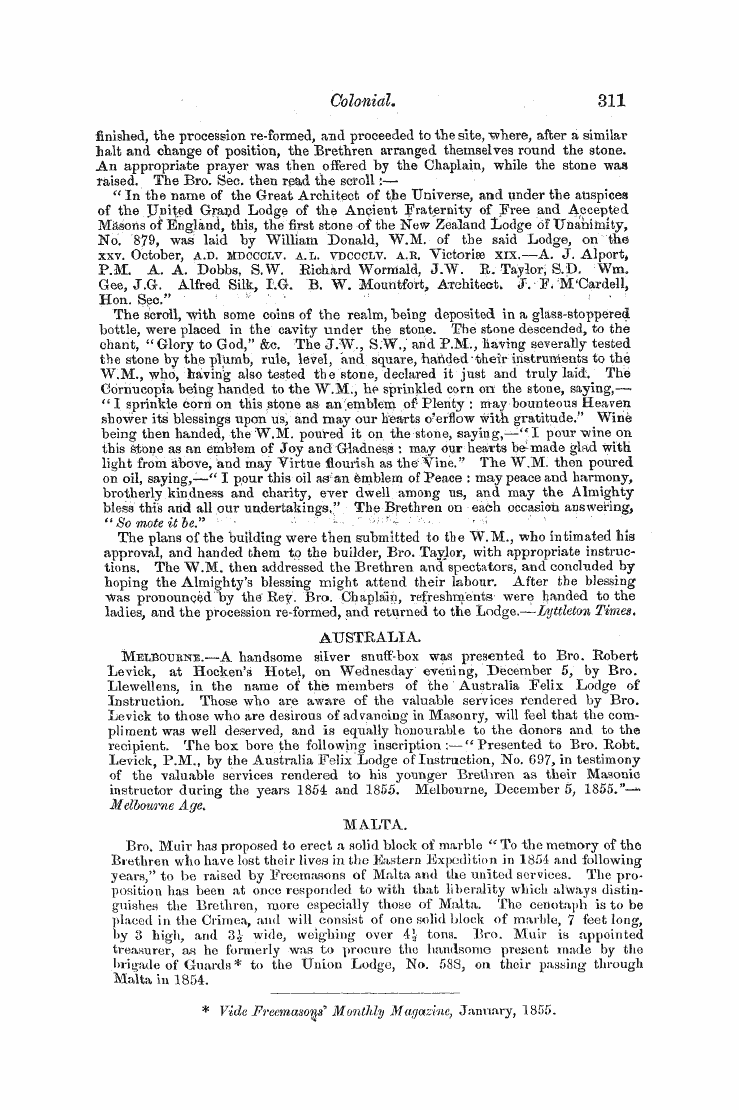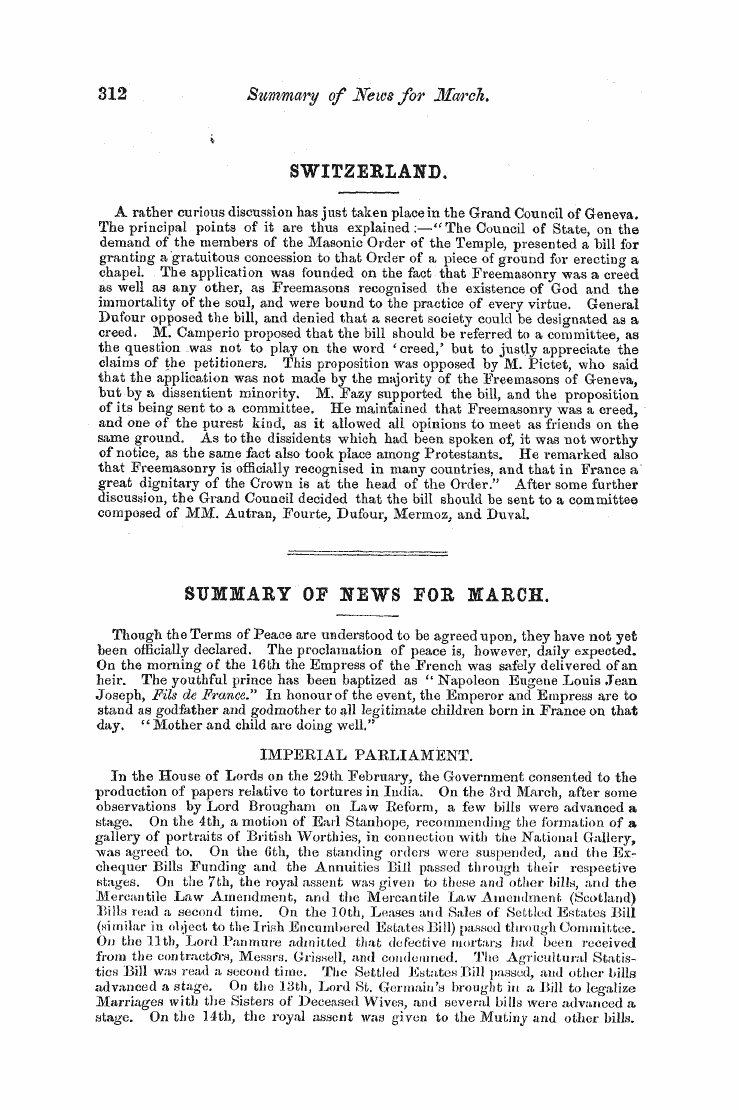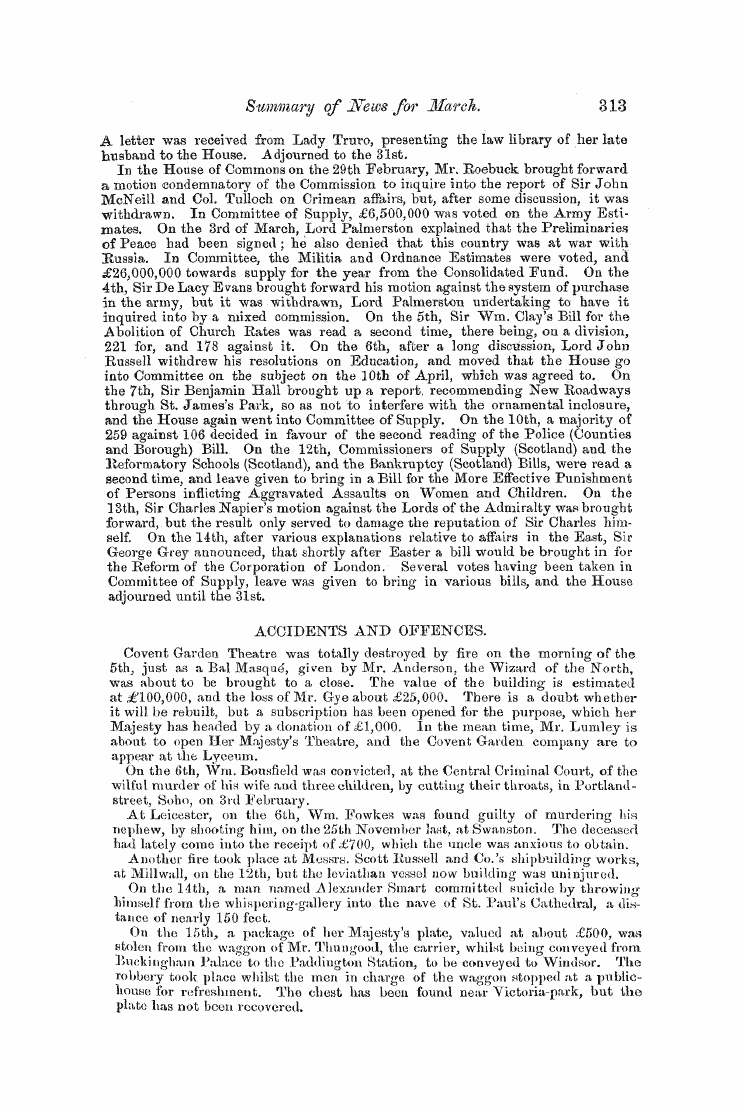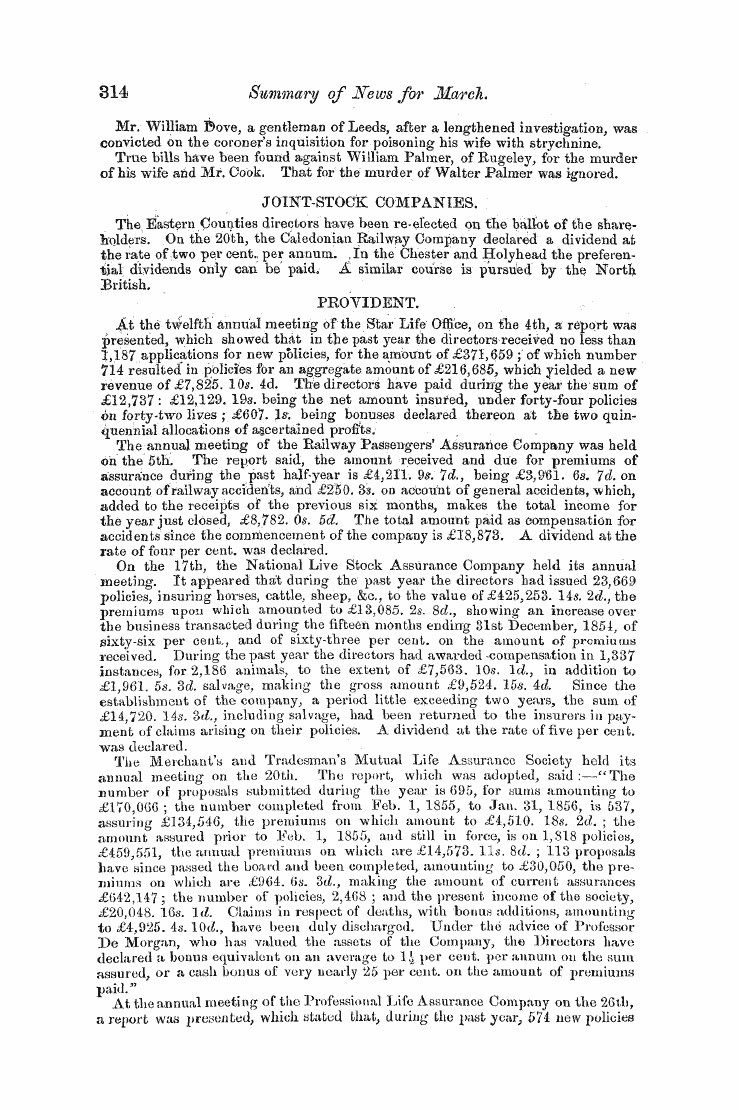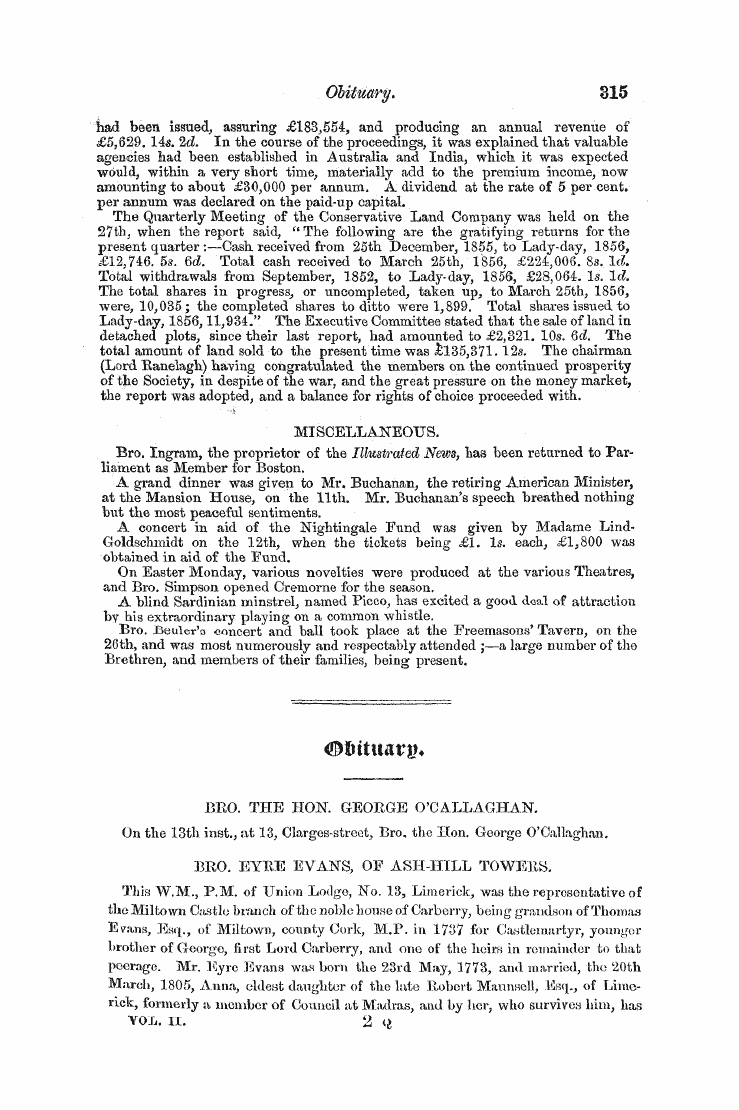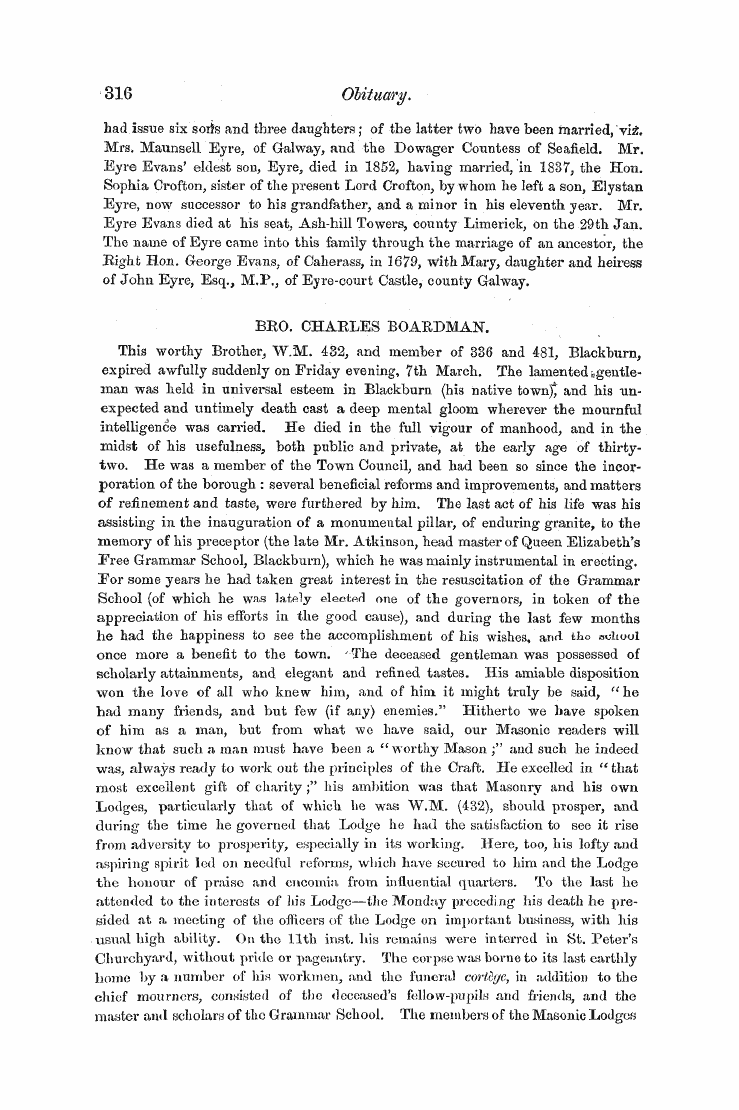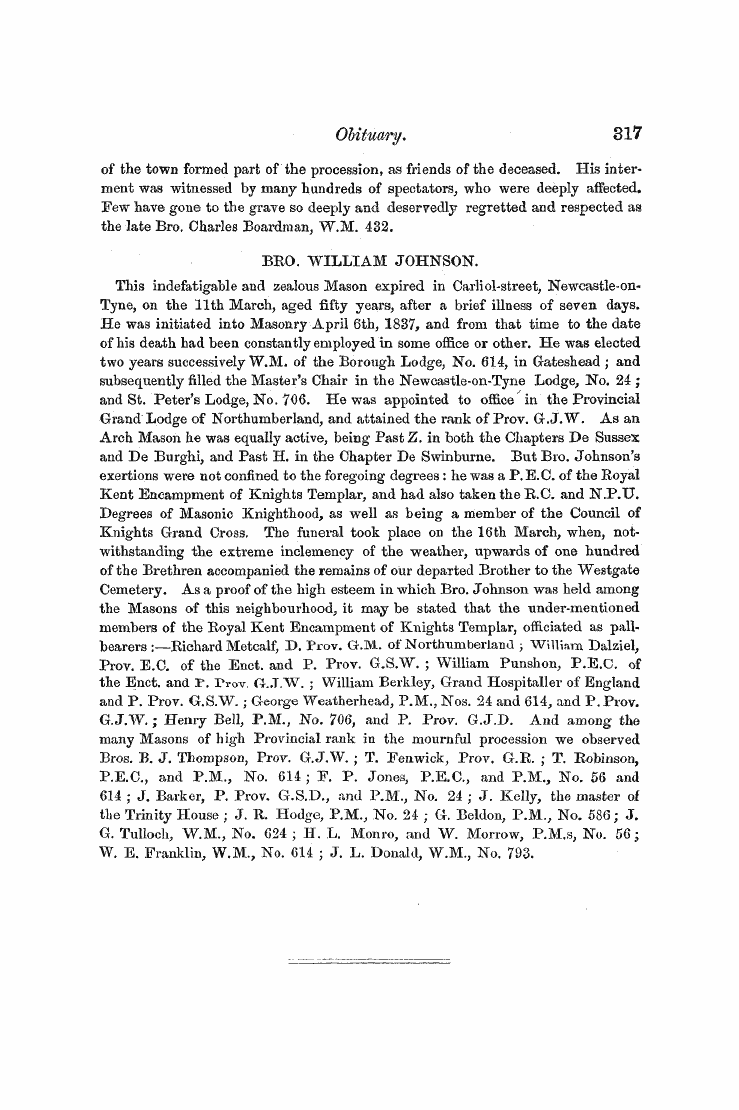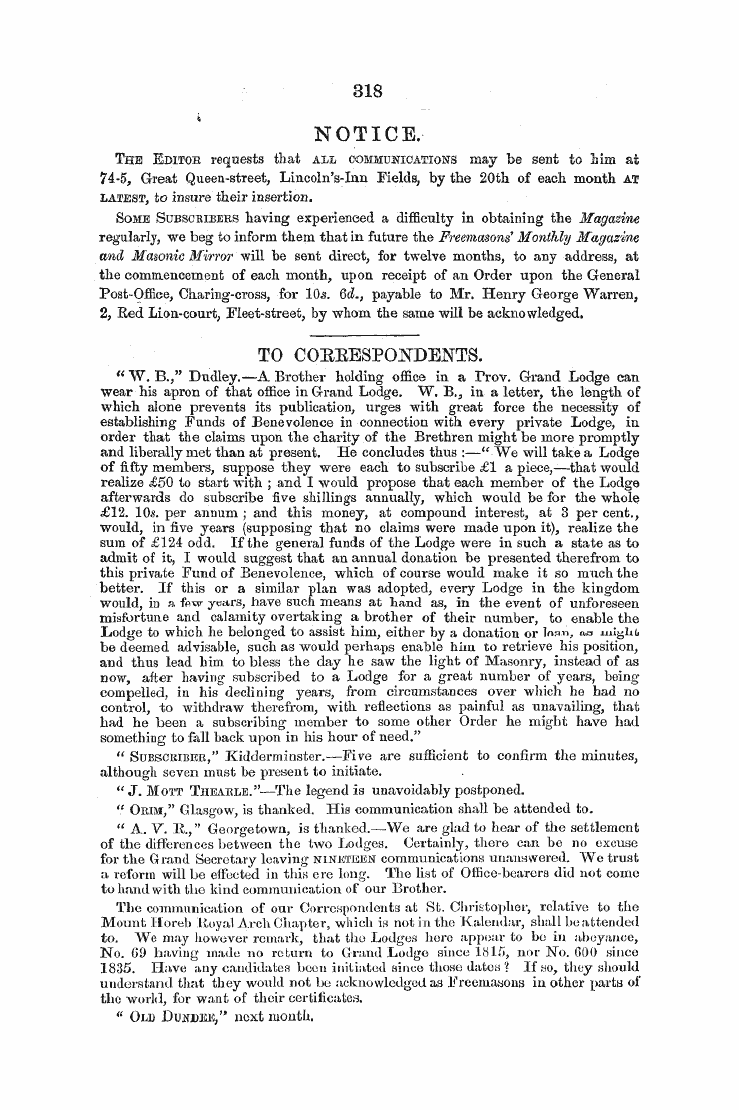-
Articles/Ads
Article Untitled Article ← Page 3 of 5 →
Note: This text has been automatically extracted via Optical Character Recognition (OCR) software.
Untitled Article
time the lay brothers enlisted themselves among the members . This union of Ereemasonry with monastic institutions had such results that the Lodges were held exclusively in the convents , and those foreign architects who built for the nobles their magnificent castles , and for the clergy their churches , were treated with great distinction .
The monks made frequent voyages to Rome , partly to bring back pictures and statues , and partly to induce other masons to assist those in England , so that those Masonic institutions were not only formed of architects , but influential men began to co-operate . The Lodges became the more important since none but free persons could become members , and it was necessary before arriving at the dignity of
Master that the candidate should have made three voyages to foreign countries , and on his return submit to an examination of his capabilities as an expert architect . "While the heads of the assemblies occupied themselves with home affairs they sent sections of the Brethren in search of architectural models in * Scotland . A party travelling in the valley of Grlenberg , situated on the north-east side of Scotland , opposite the isle of Skve , came in sight of two old castles , built with large stones without
lime or mortar : they appeared to have been places of refuge during troubled times . Being pleased with the wild and romantic aspect of the place , the Ereemasons took possession and formed an association under the title of Master of the Valley . In was in the halls of such dreary and desolate buildings that some of those persevering men studied the Scotch models , while others roamed the country in search of different styles .
The Reformation gave a fatal blow to those institutions , and put a stop for a time to the erection of the vast religious piles ; but the great fire in London , which destroyed 40 , 000 houses and eighty-six churches , gave a fresh impulse to Freemasonry . The workmen in England not being found sufficient , foreign aid was called in , and the whole of the Brethren placed themselves under the authority of a central Lodge directed by Sir Christopher Wren . *
After his death the Lodge of St . Paul's took a new and important step . Hitherto none but architects and masons were admitted to the order , but in a grand assembly of the Brethren it was decided unanimously that persons of all professions should be admitted , provided they were found eligible . This decision changed entirely the aspect of Freemasonry , and contributed chiefly to bring it to its present flourishing condition .
But the Masons found much difficulty in this plan , partly by disunion among themselves , and partly by political troubles . When James II . came to the throne , in 1685 , his leaning towards Catholicism throwing the whole country into disorder , the Ereemasons divided themselves into two parties ; the Scotch having at their head the Chevaliers de St . Andre on the side of the hypocritical king , and * The celebrated Lodge of York was founded in 92 (> , under the patronage of King AtheLstan and lritf brother Edward . von . jr . 2 i
Note: This text has been automatically extracted via Optical Character Recognition (OCR) software.
Untitled Article
time the lay brothers enlisted themselves among the members . This union of Ereemasonry with monastic institutions had such results that the Lodges were held exclusively in the convents , and those foreign architects who built for the nobles their magnificent castles , and for the clergy their churches , were treated with great distinction .
The monks made frequent voyages to Rome , partly to bring back pictures and statues , and partly to induce other masons to assist those in England , so that those Masonic institutions were not only formed of architects , but influential men began to co-operate . The Lodges became the more important since none but free persons could become members , and it was necessary before arriving at the dignity of
Master that the candidate should have made three voyages to foreign countries , and on his return submit to an examination of his capabilities as an expert architect . "While the heads of the assemblies occupied themselves with home affairs they sent sections of the Brethren in search of architectural models in * Scotland . A party travelling in the valley of Grlenberg , situated on the north-east side of Scotland , opposite the isle of Skve , came in sight of two old castles , built with large stones without
lime or mortar : they appeared to have been places of refuge during troubled times . Being pleased with the wild and romantic aspect of the place , the Ereemasons took possession and formed an association under the title of Master of the Valley . In was in the halls of such dreary and desolate buildings that some of those persevering men studied the Scotch models , while others roamed the country in search of different styles .
The Reformation gave a fatal blow to those institutions , and put a stop for a time to the erection of the vast religious piles ; but the great fire in London , which destroyed 40 , 000 houses and eighty-six churches , gave a fresh impulse to Freemasonry . The workmen in England not being found sufficient , foreign aid was called in , and the whole of the Brethren placed themselves under the authority of a central Lodge directed by Sir Christopher Wren . *
After his death the Lodge of St . Paul's took a new and important step . Hitherto none but architects and masons were admitted to the order , but in a grand assembly of the Brethren it was decided unanimously that persons of all professions should be admitted , provided they were found eligible . This decision changed entirely the aspect of Freemasonry , and contributed chiefly to bring it to its present flourishing condition .
But the Masons found much difficulty in this plan , partly by disunion among themselves , and partly by political troubles . When James II . came to the throne , in 1685 , his leaning towards Catholicism throwing the whole country into disorder , the Ereemasons divided themselves into two parties ; the Scotch having at their head the Chevaliers de St . Andre on the side of the hypocritical king , and * The celebrated Lodge of York was founded in 92 (> , under the patronage of King AtheLstan and lritf brother Edward . von . jr . 2 i




















